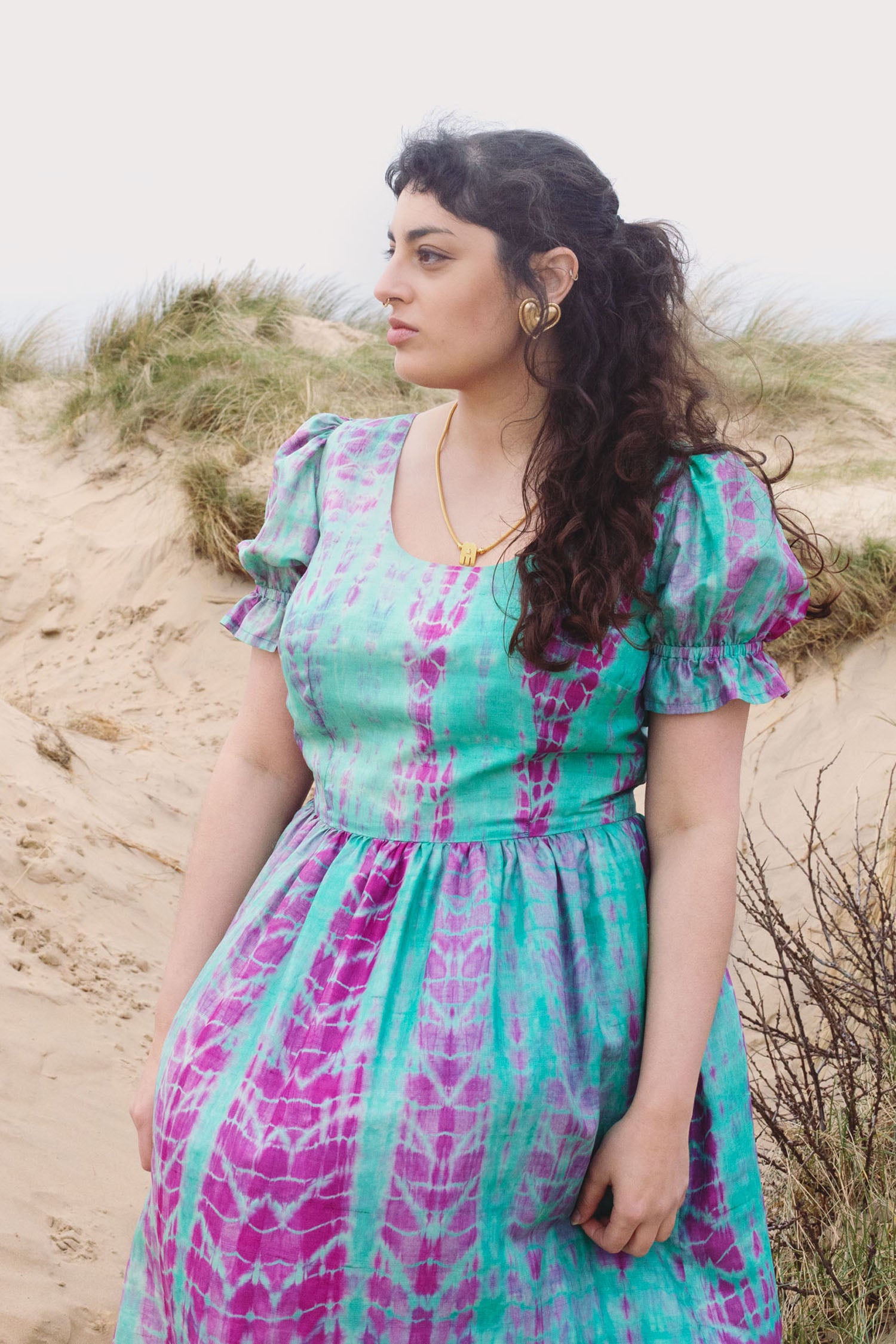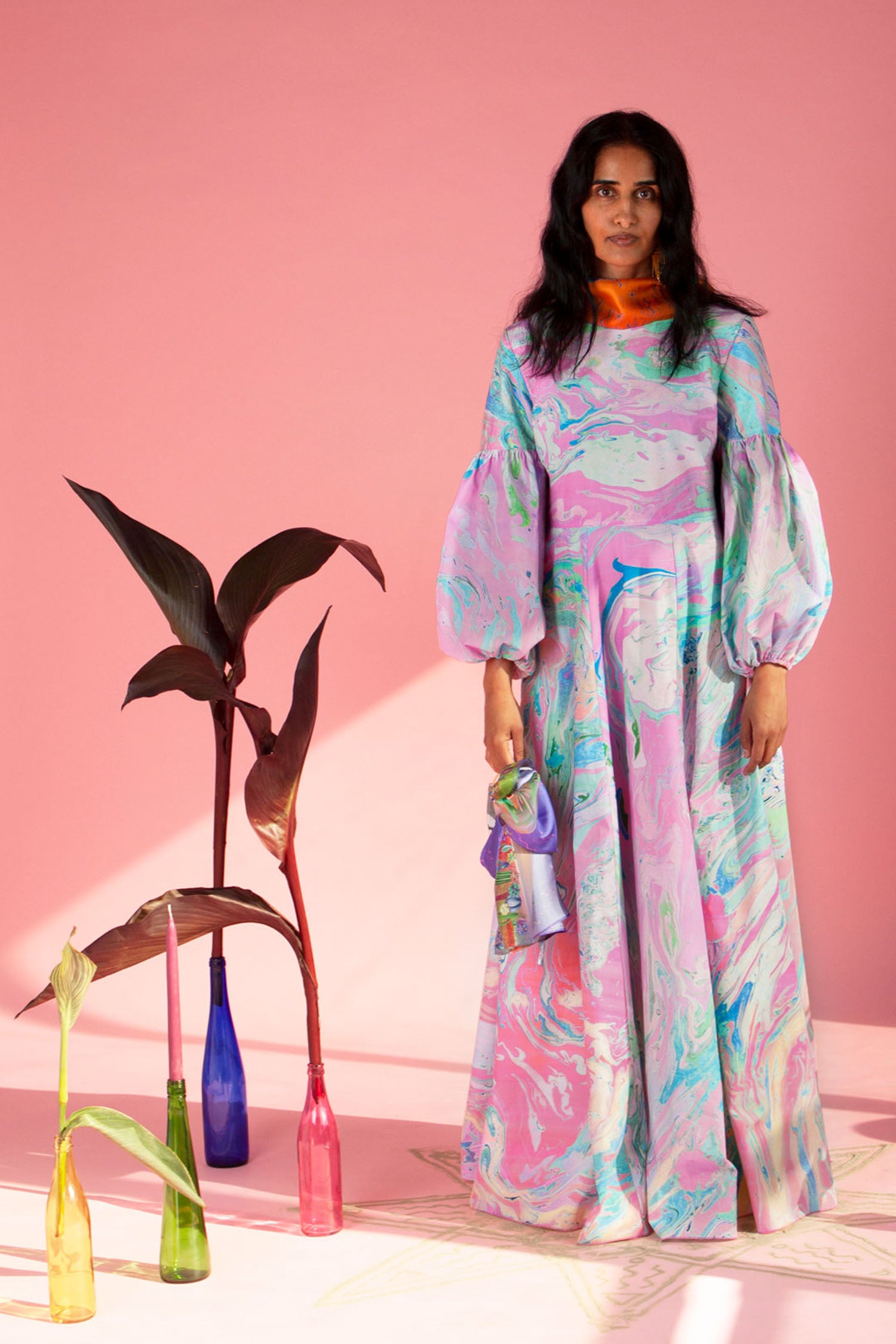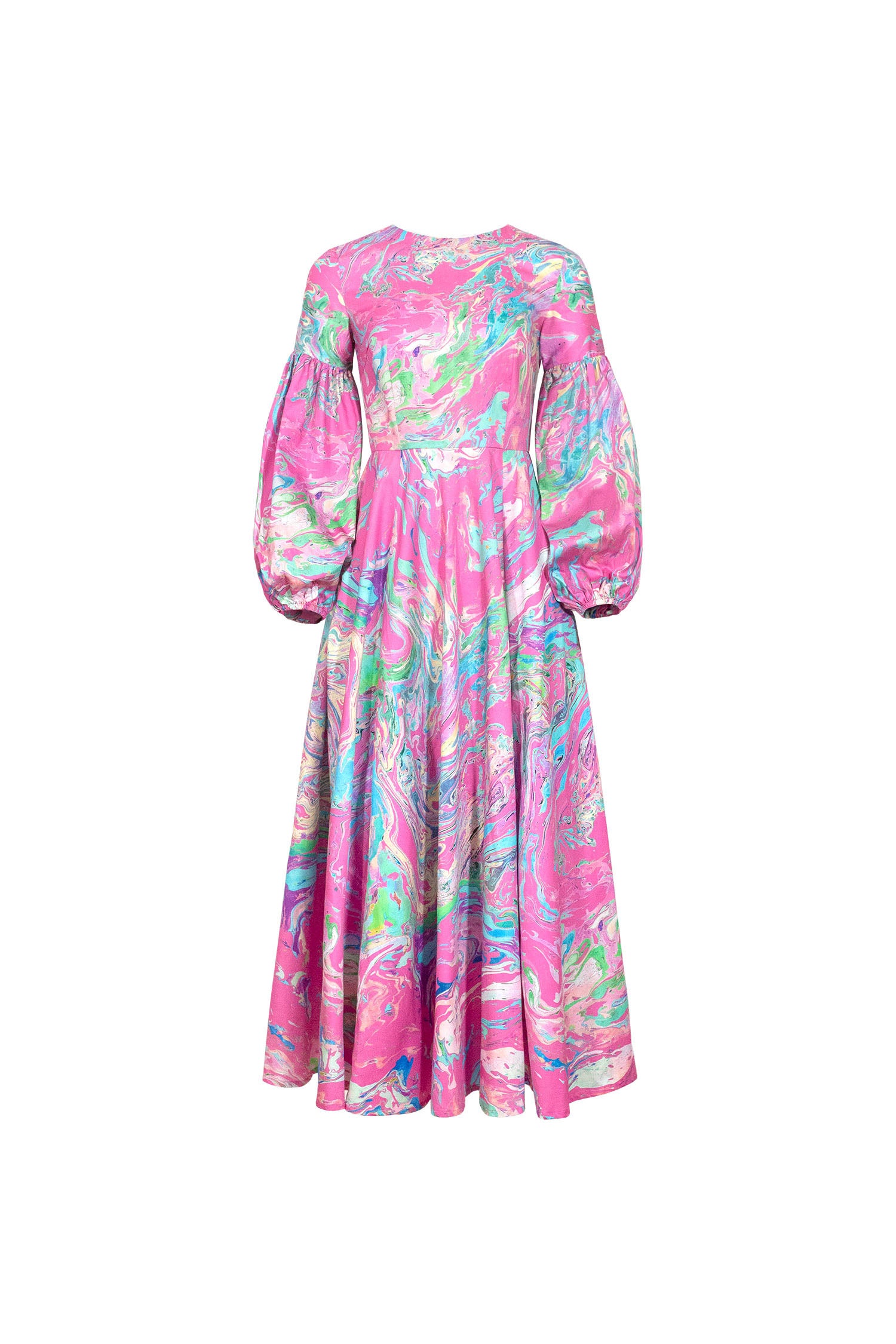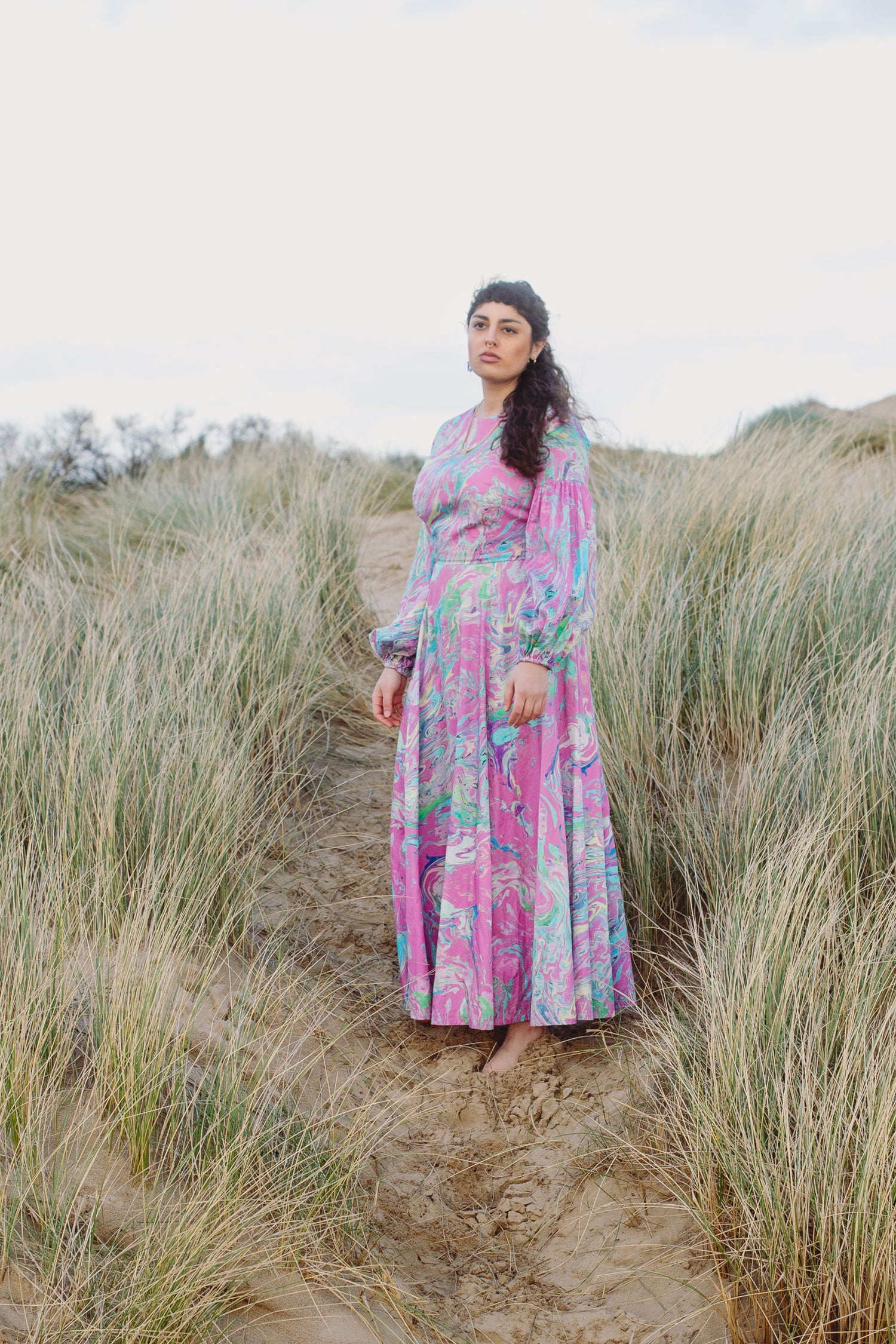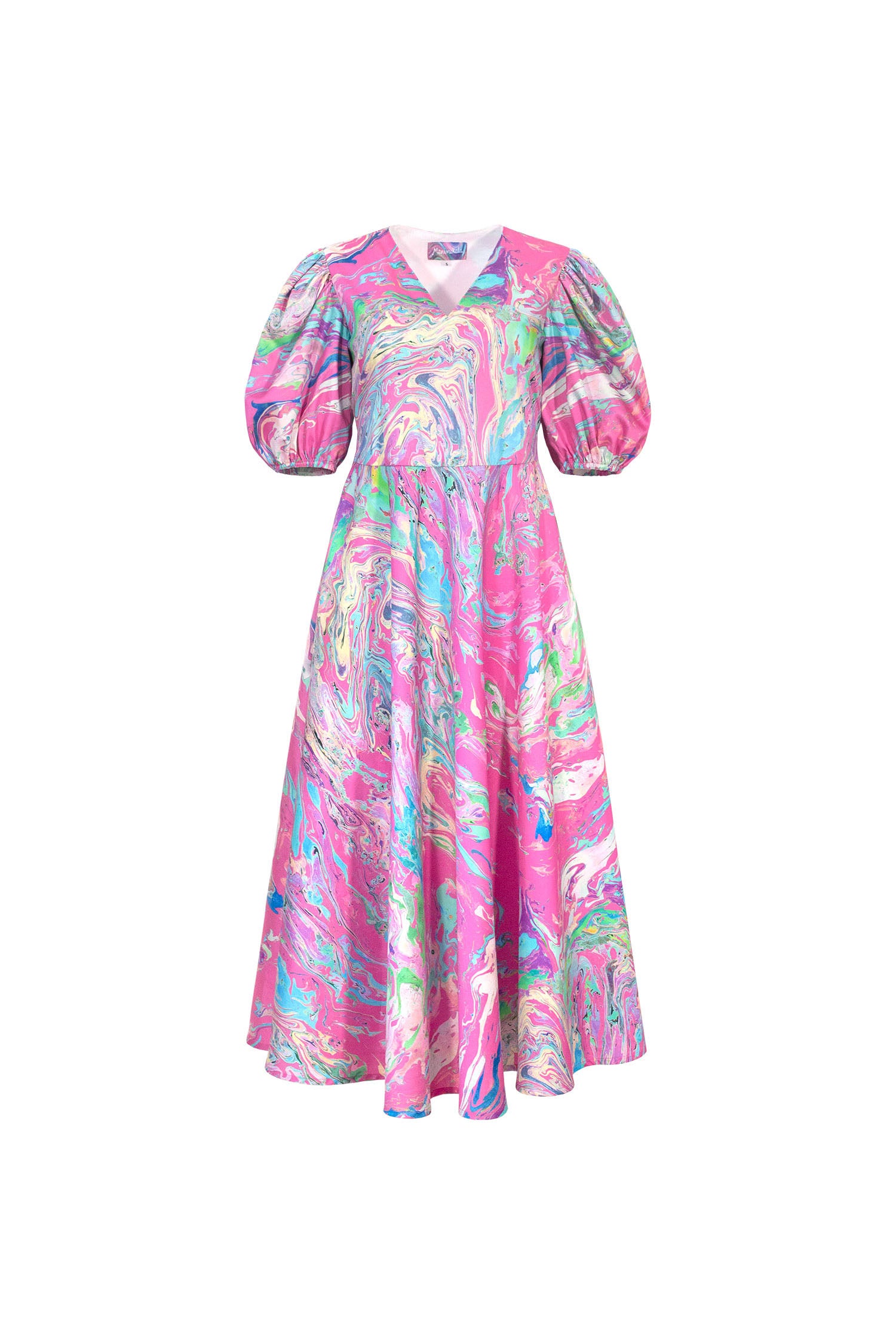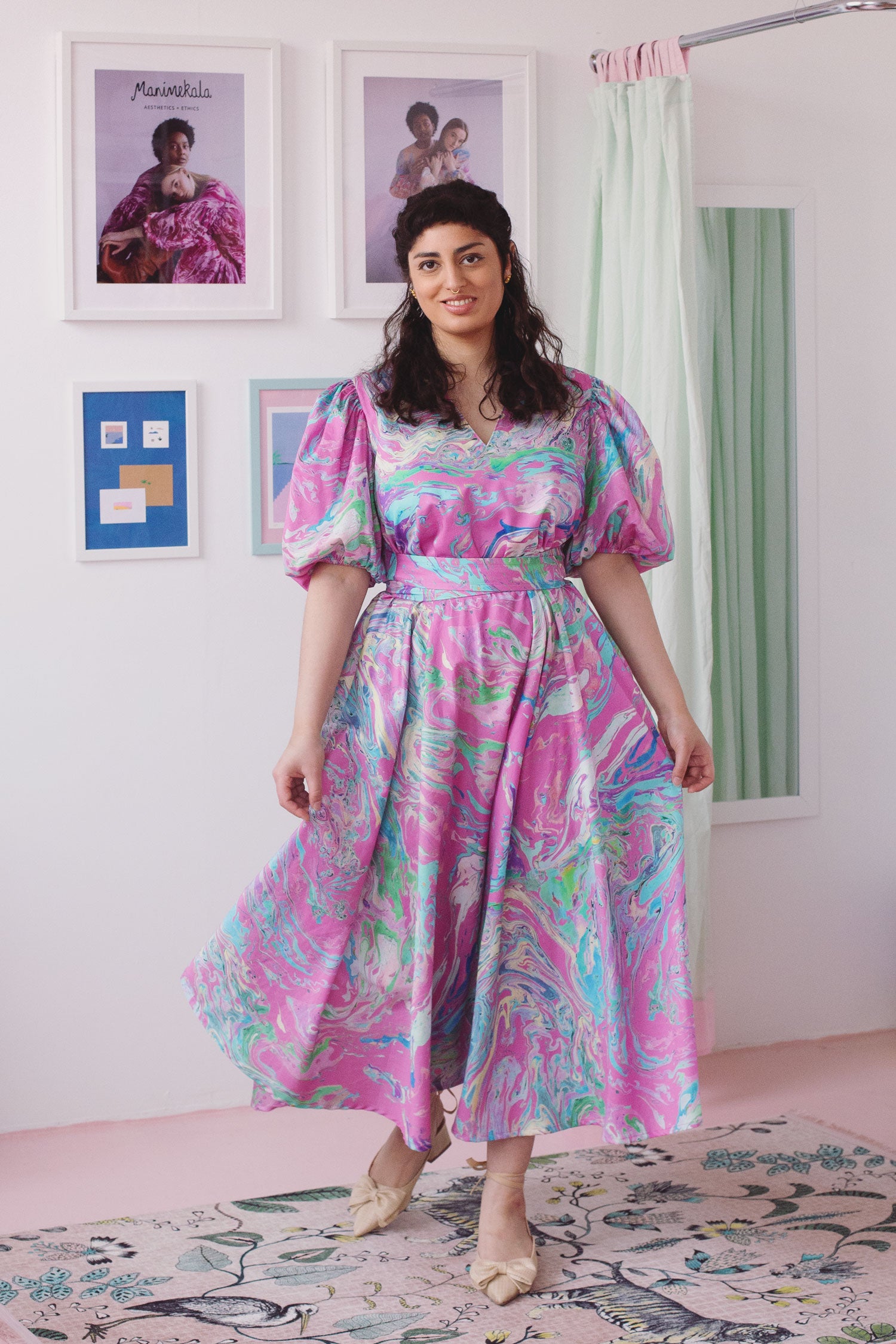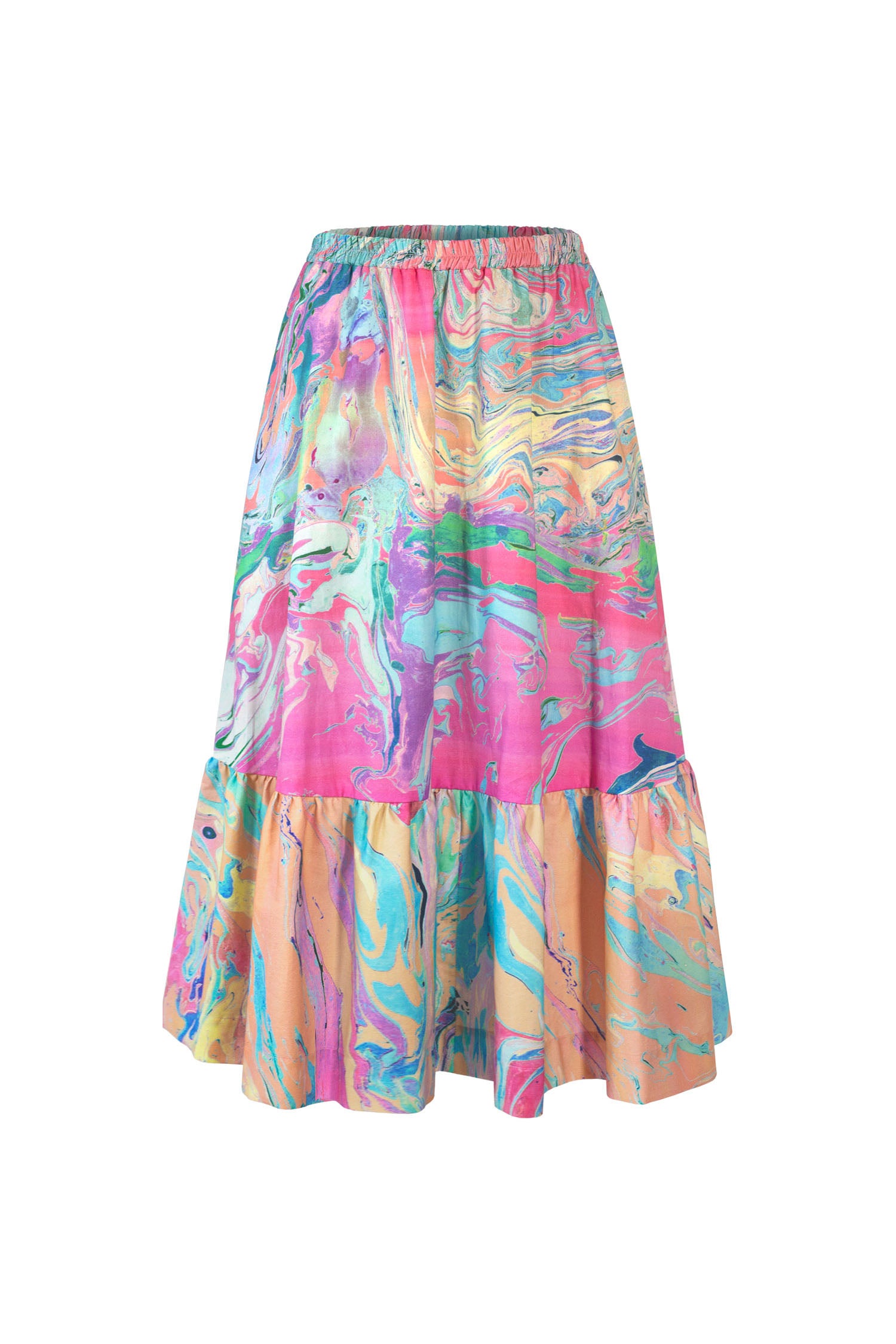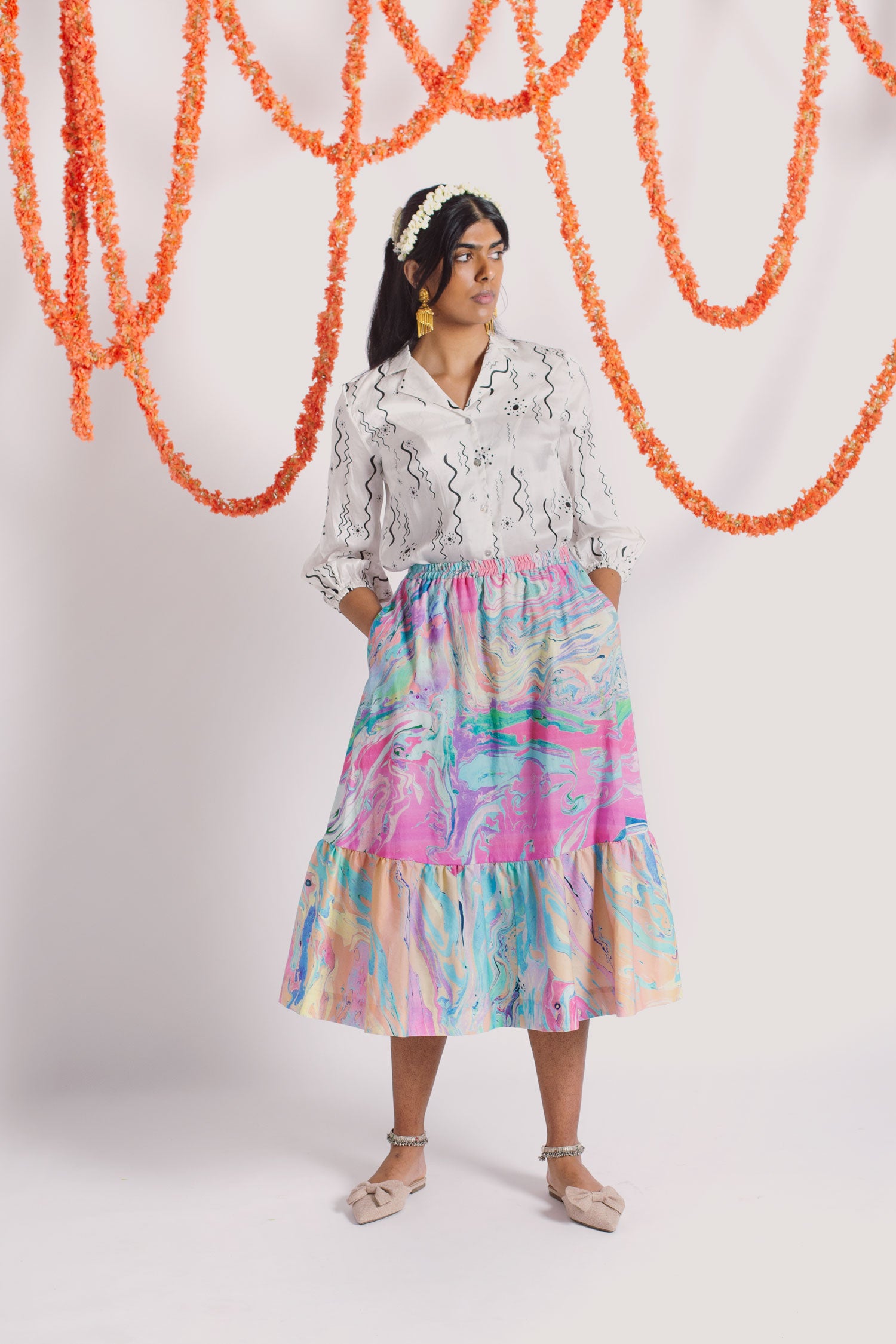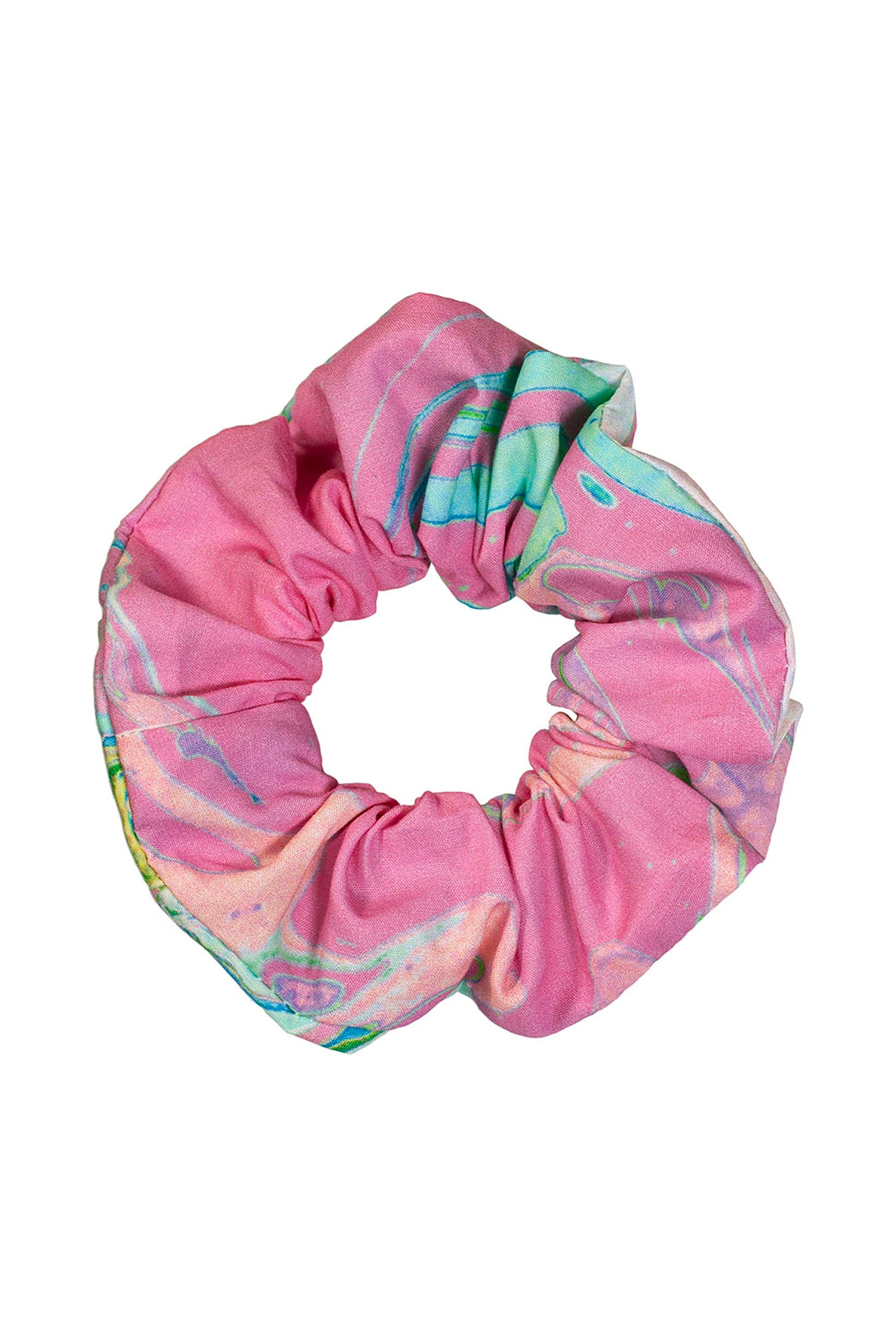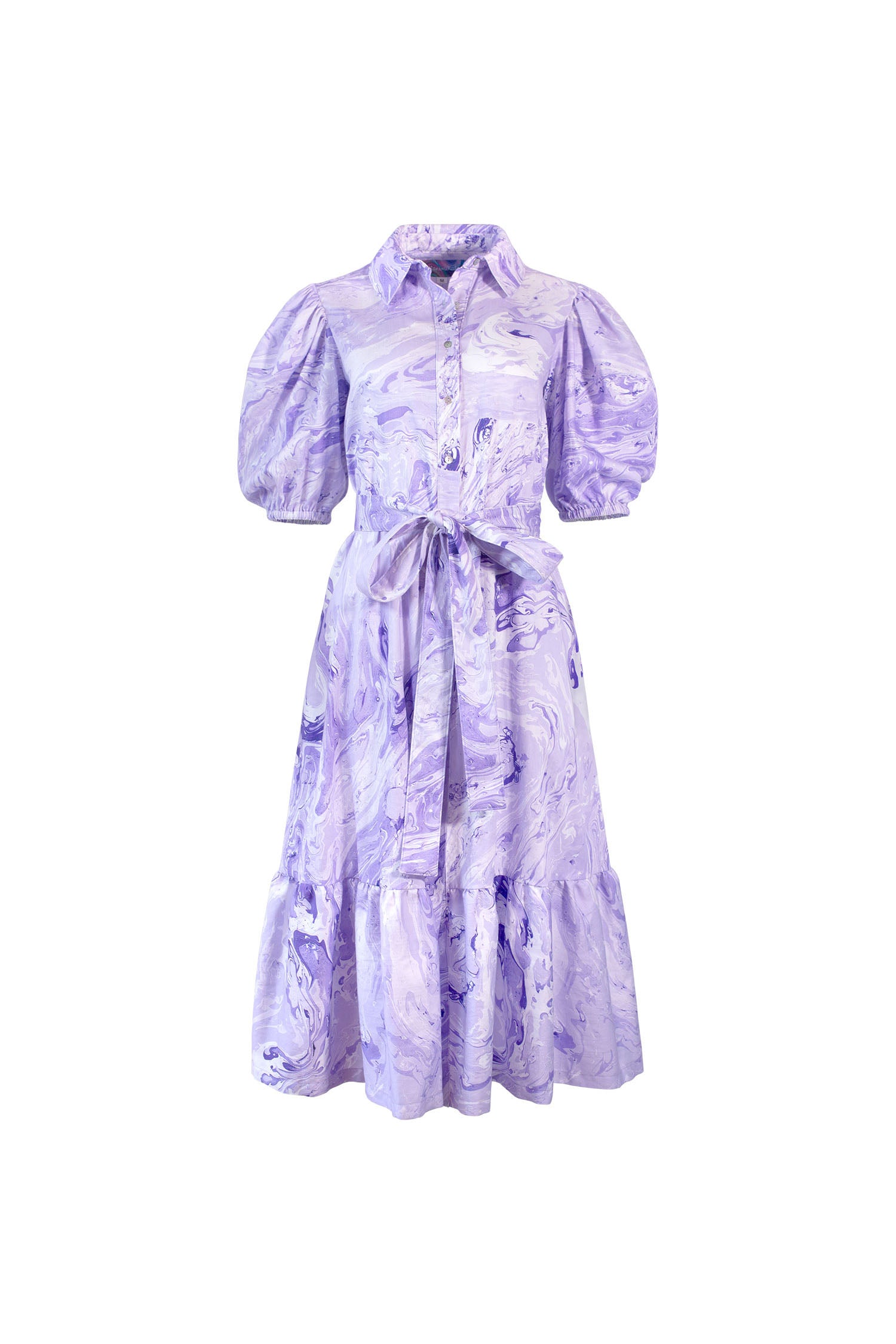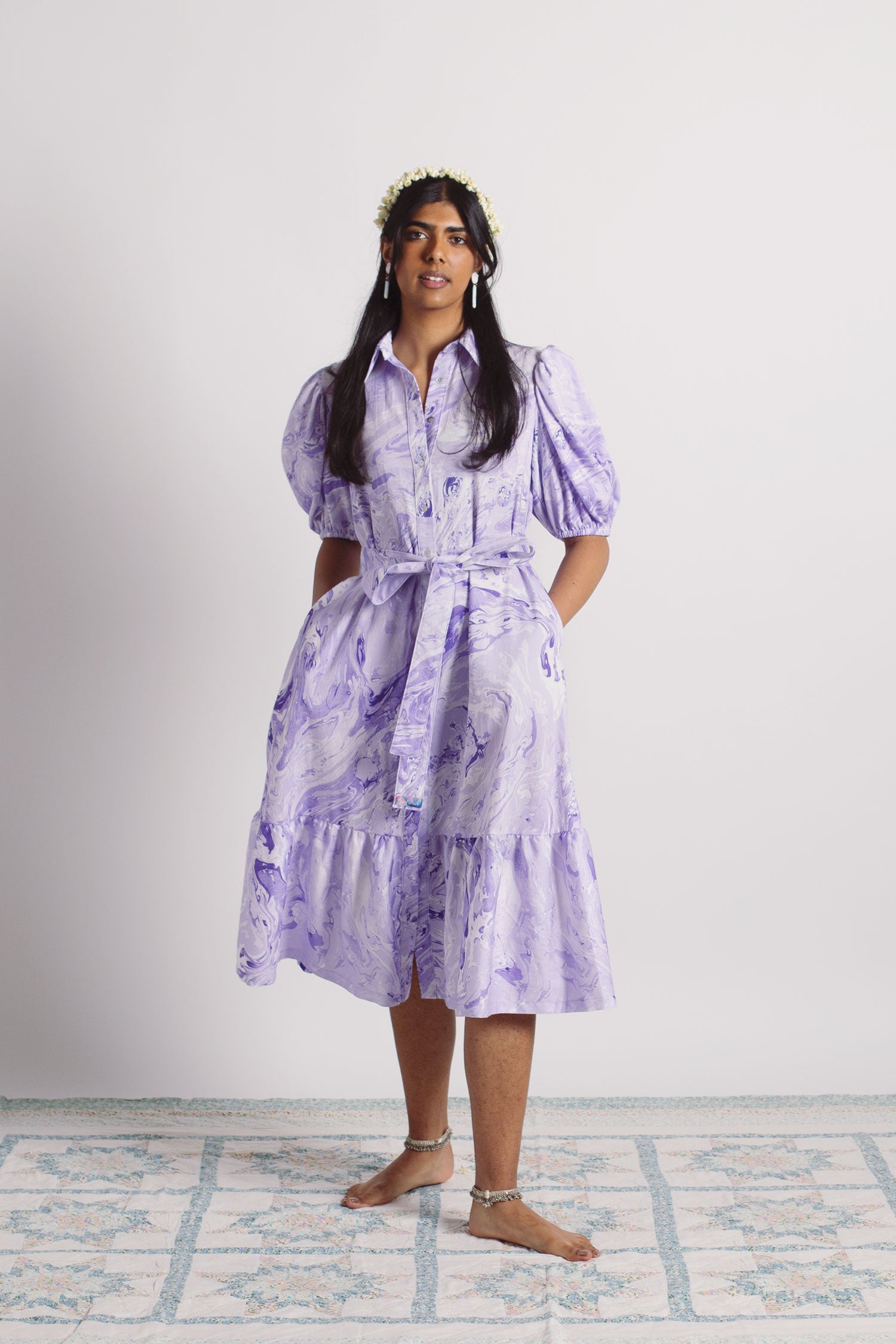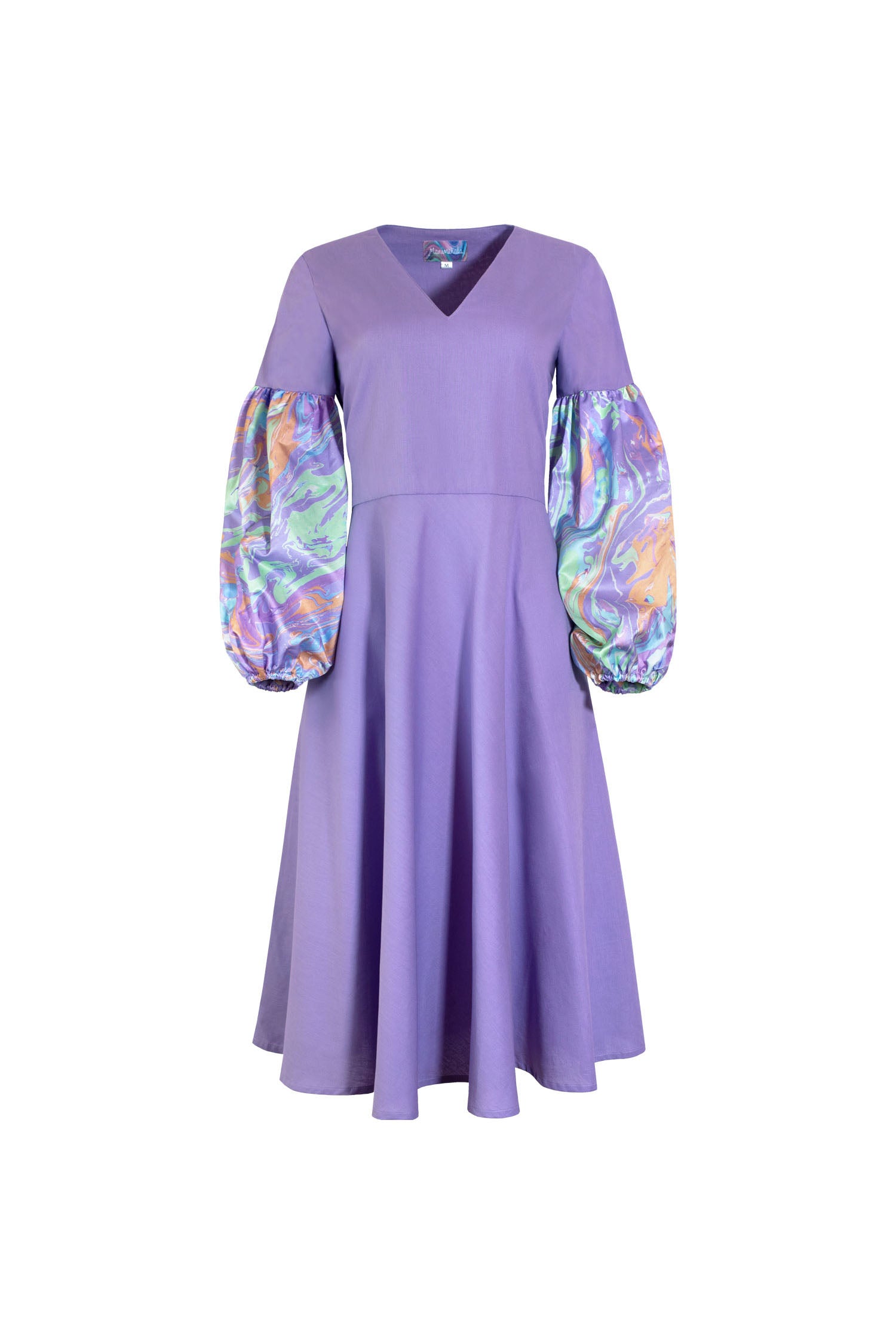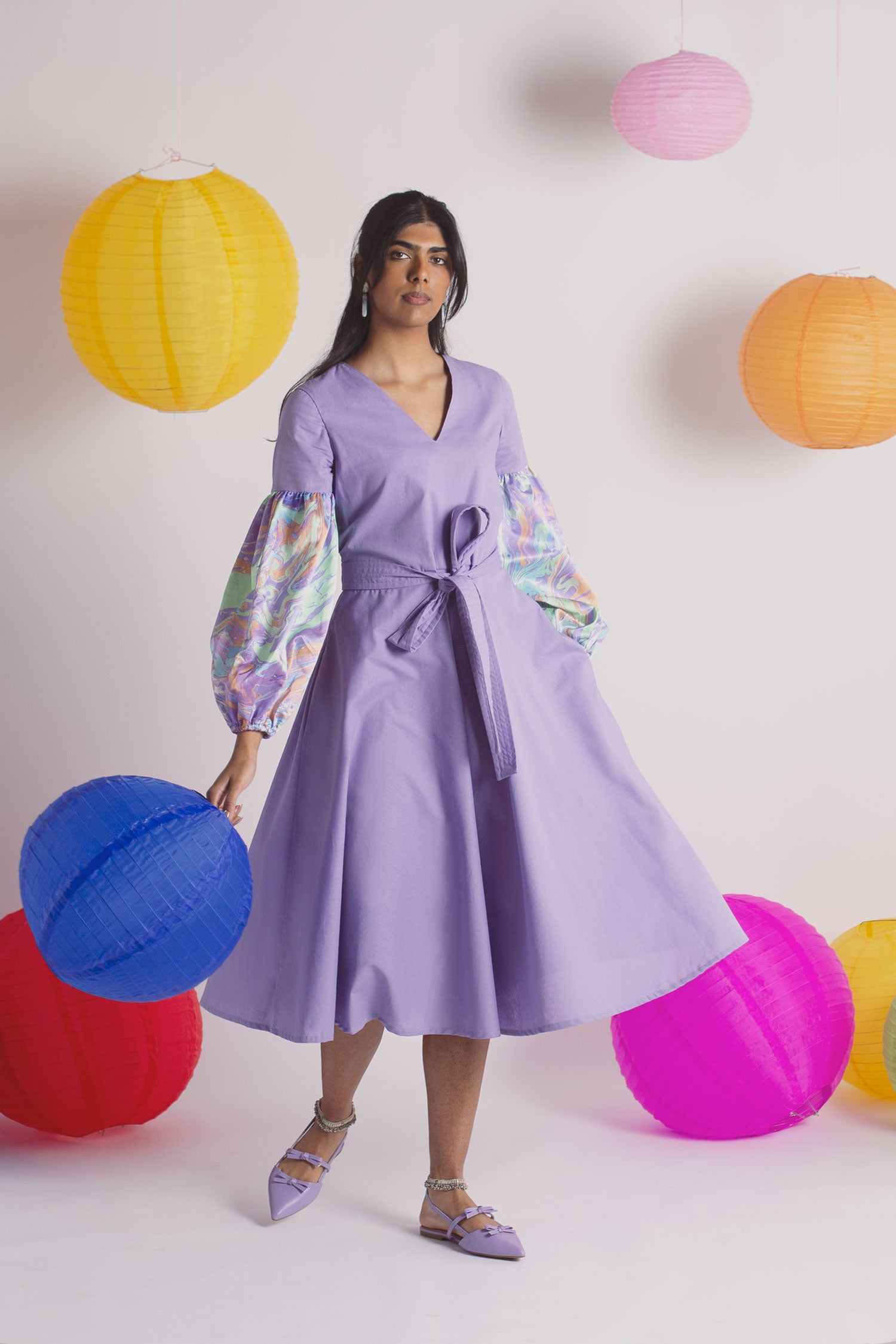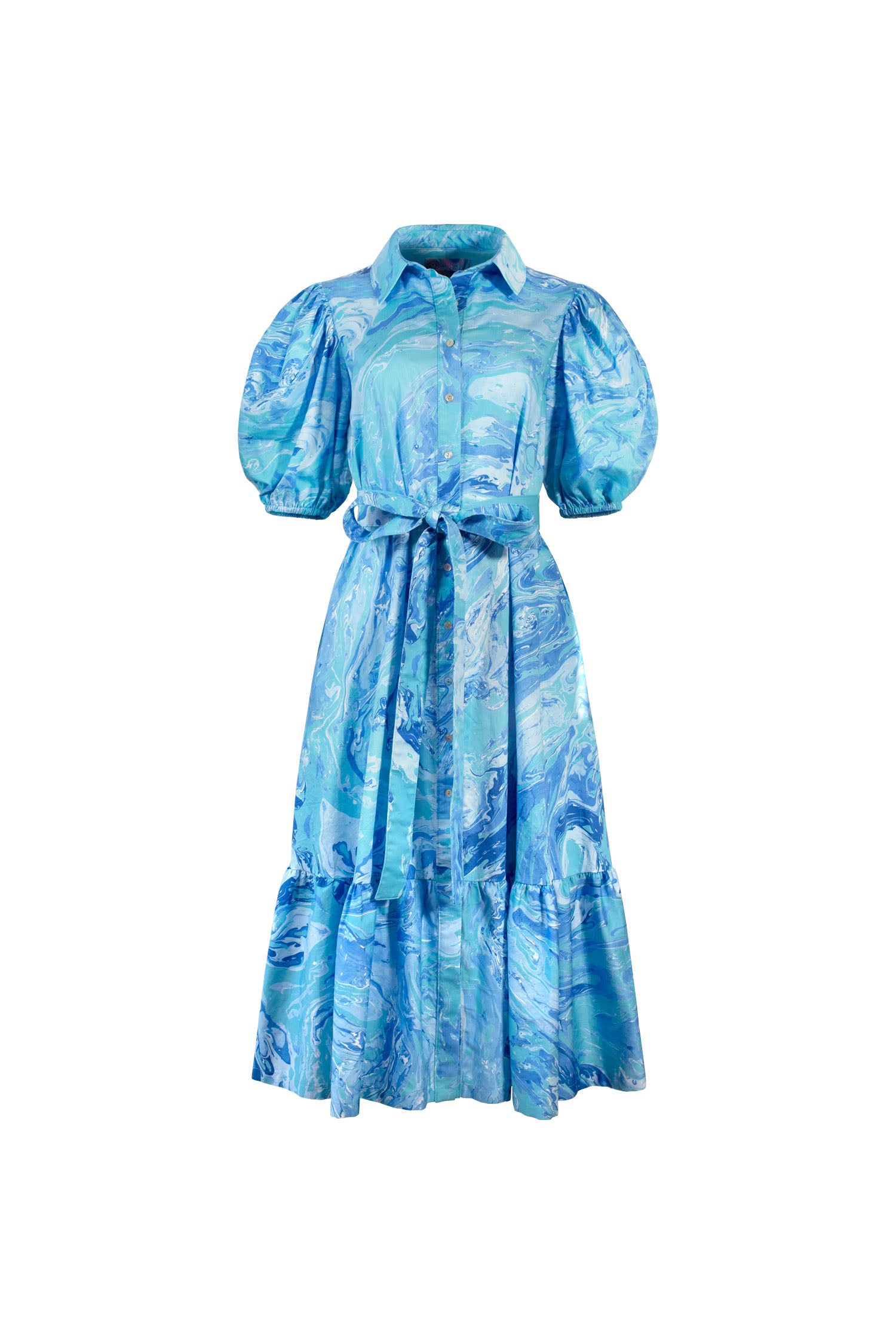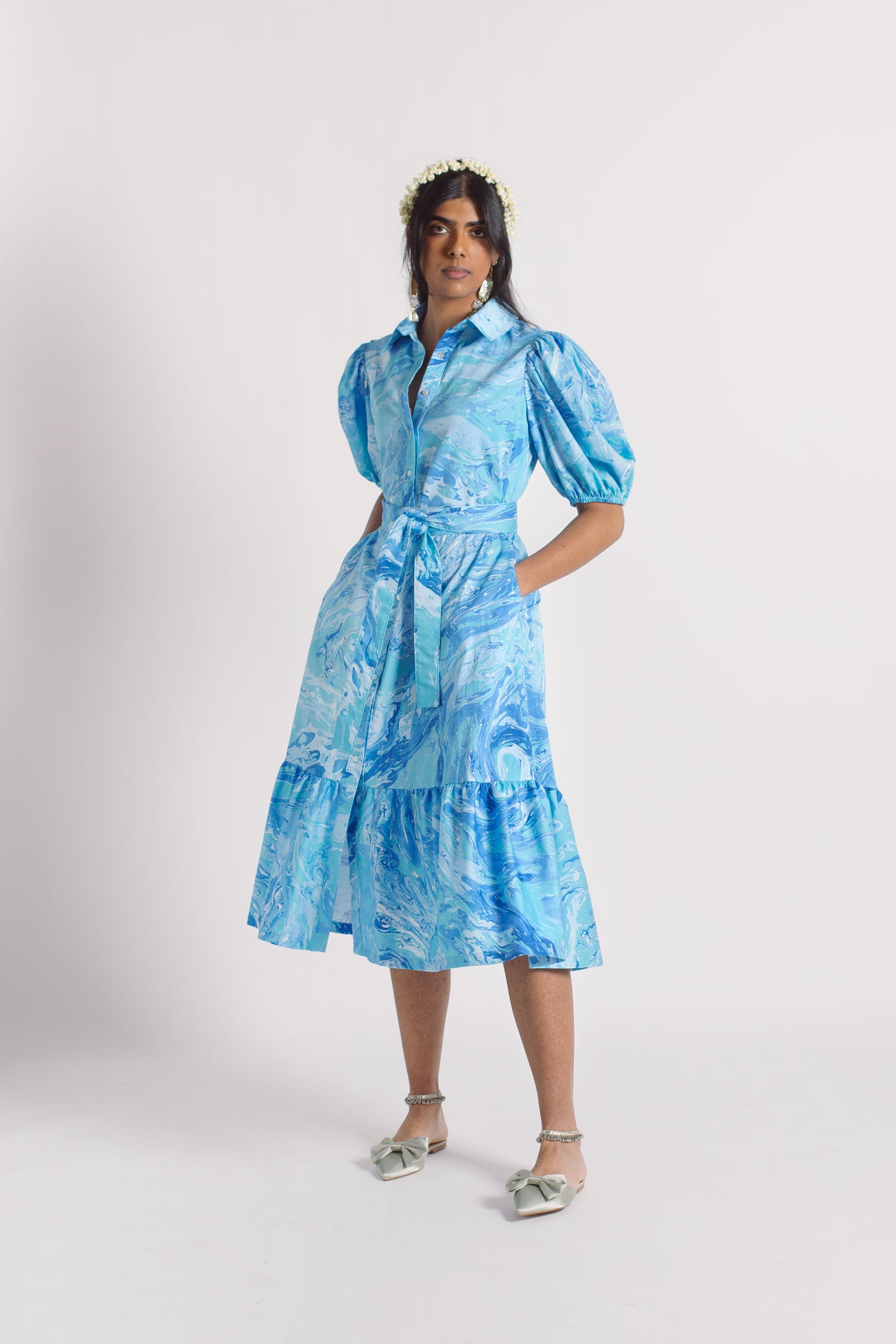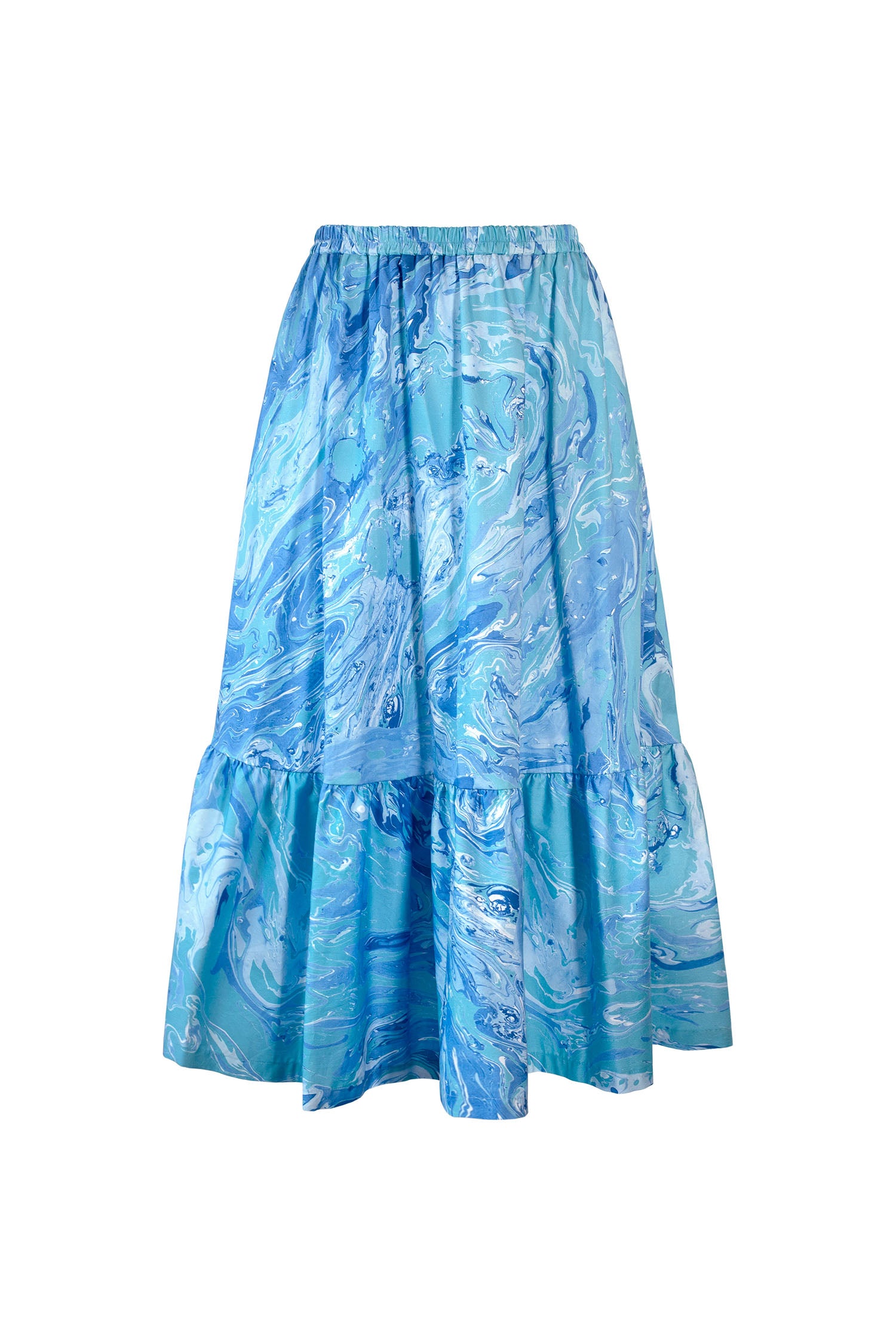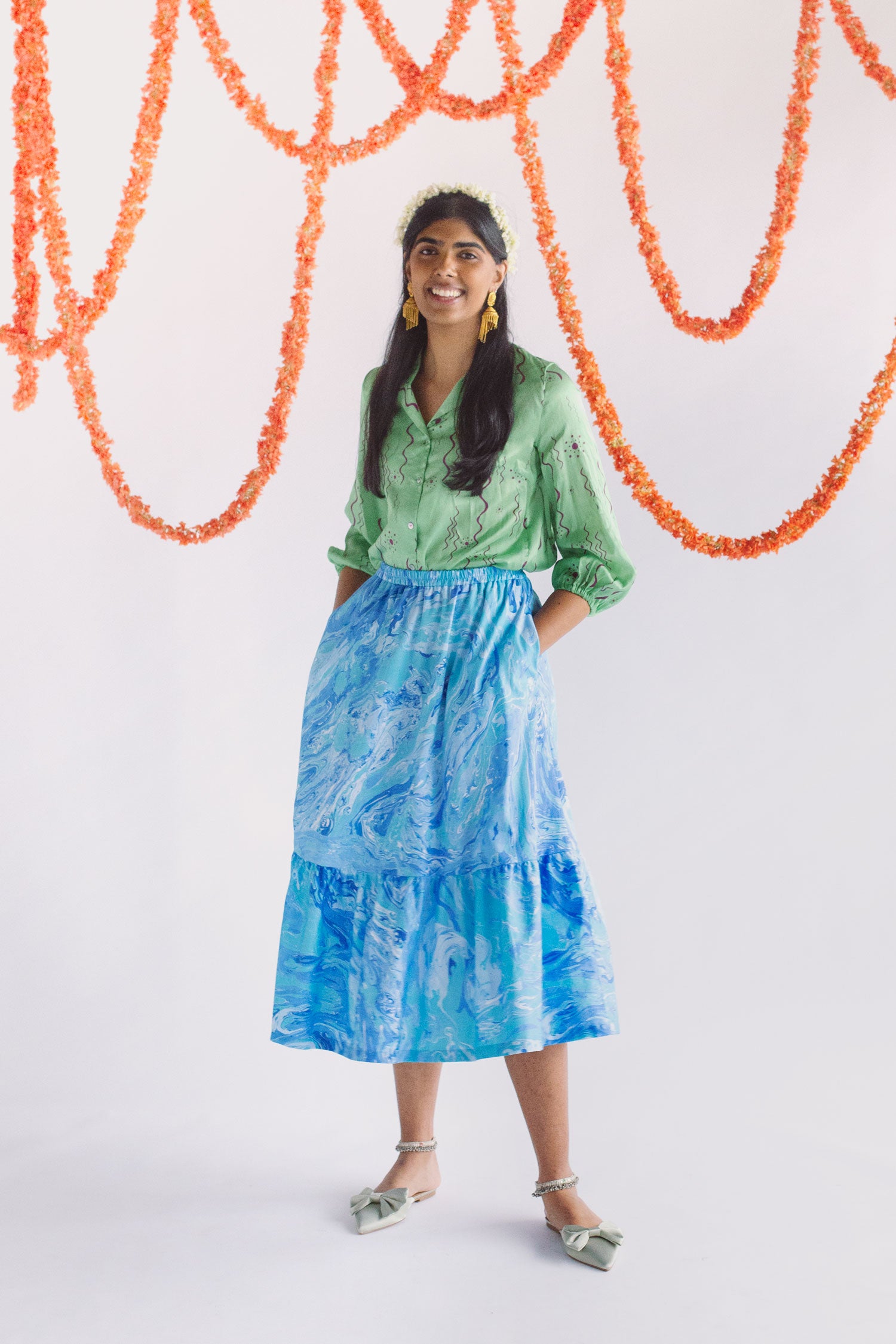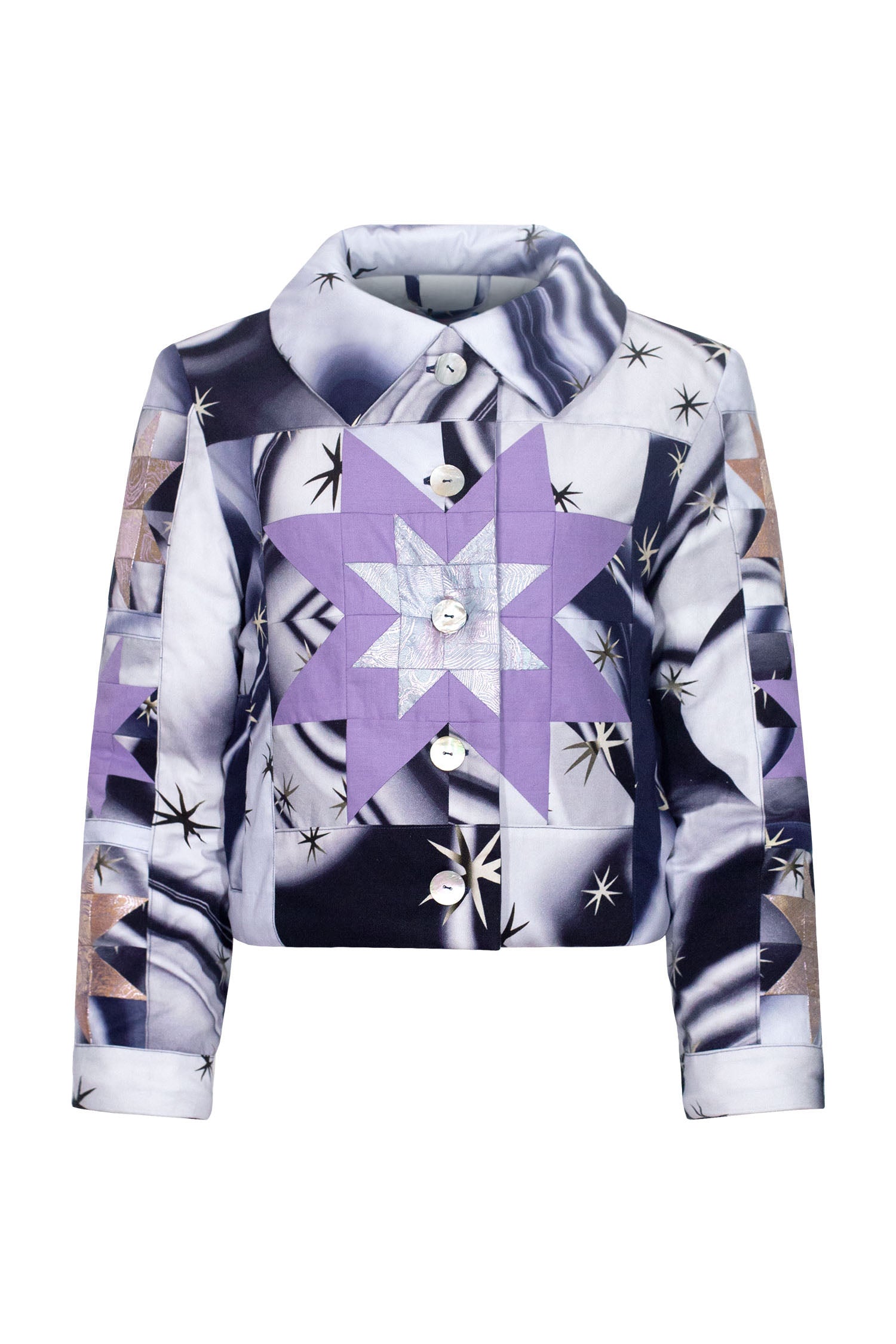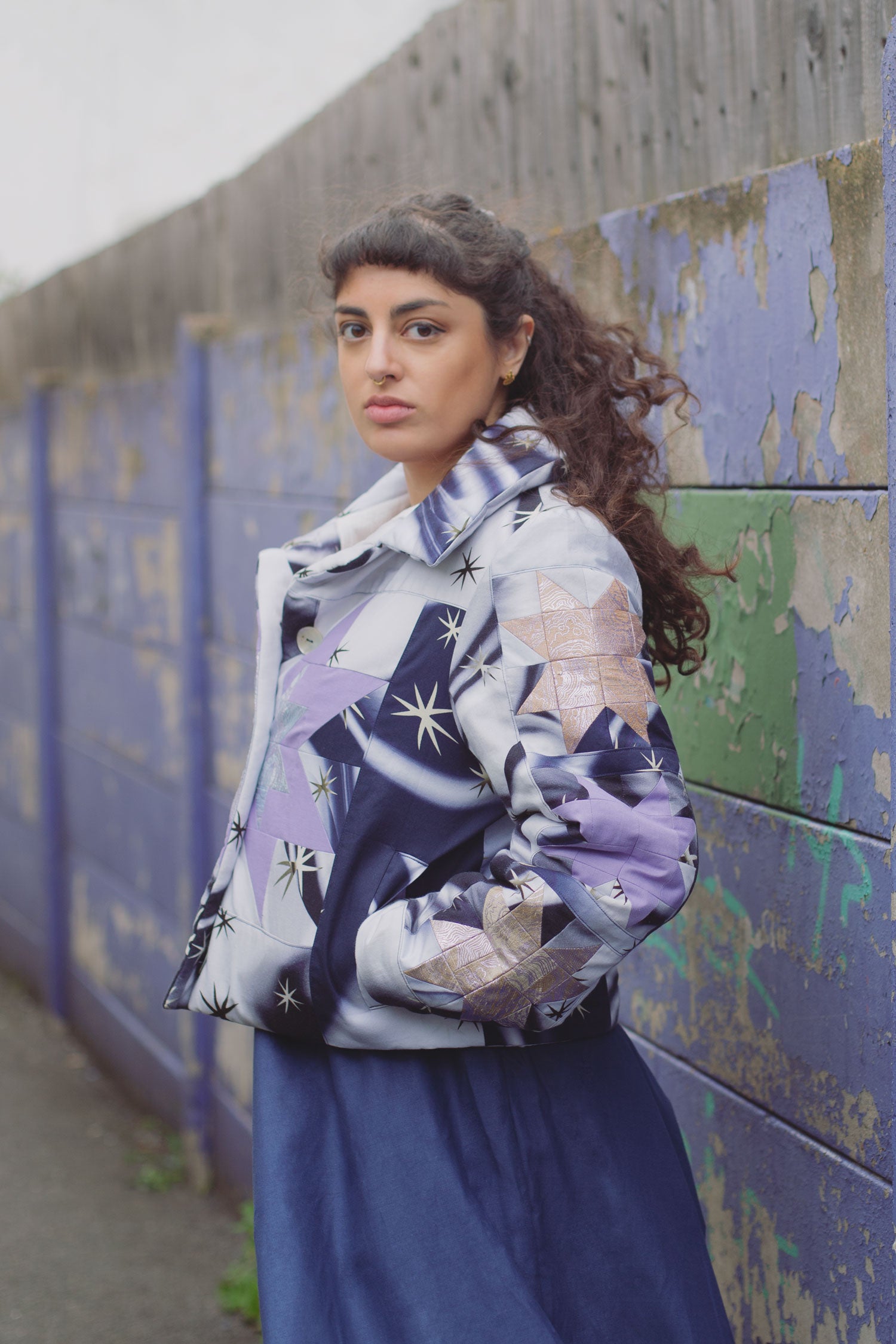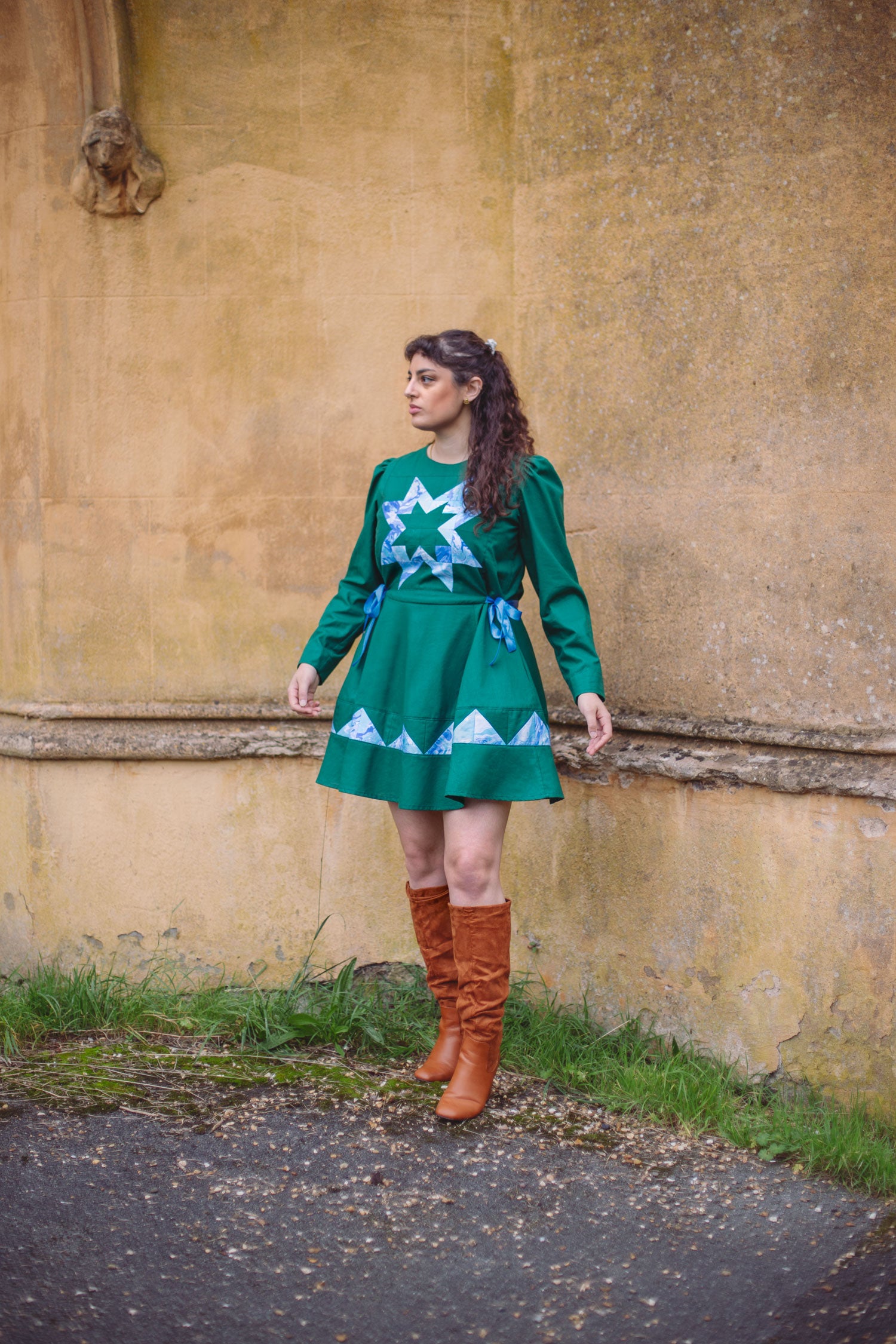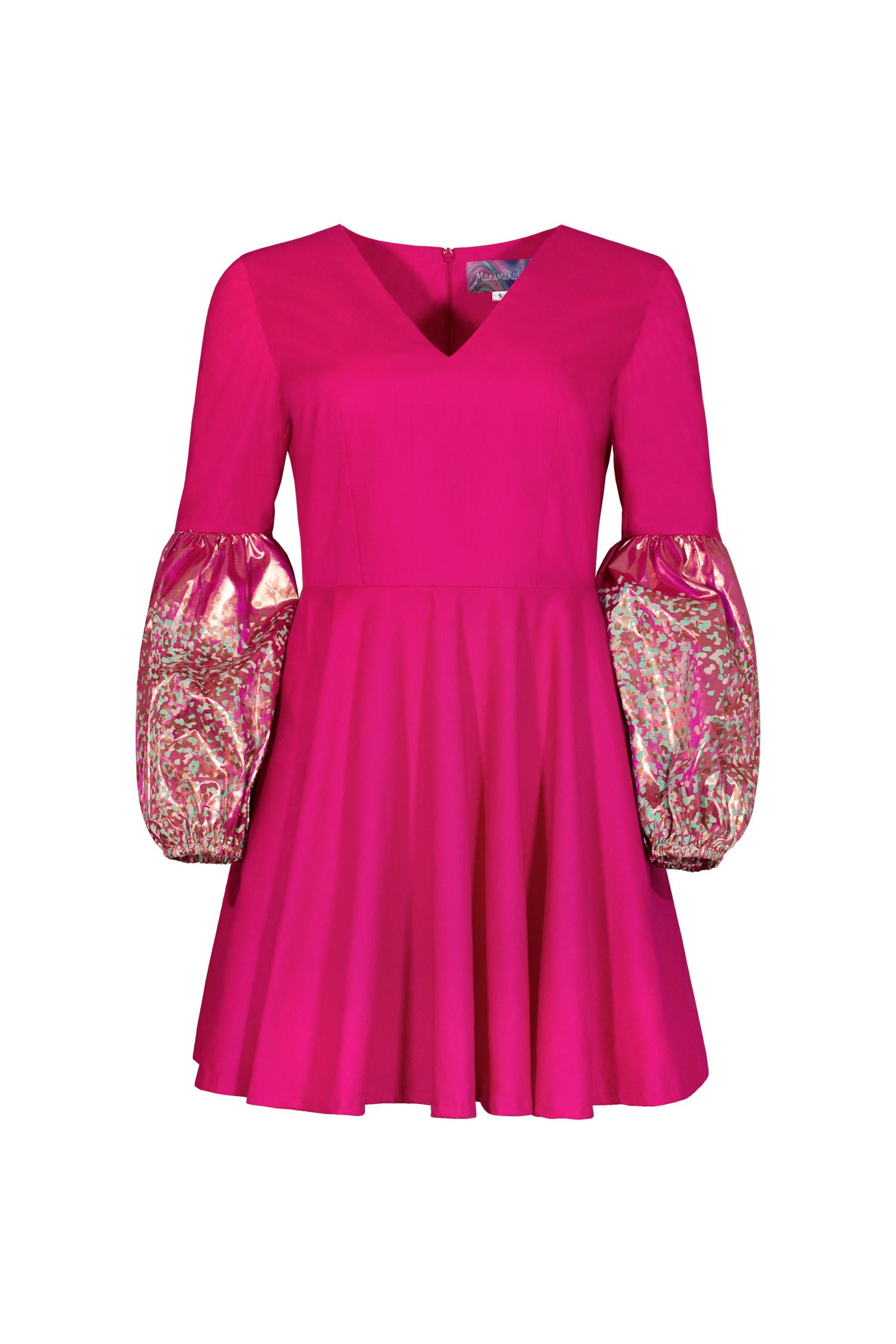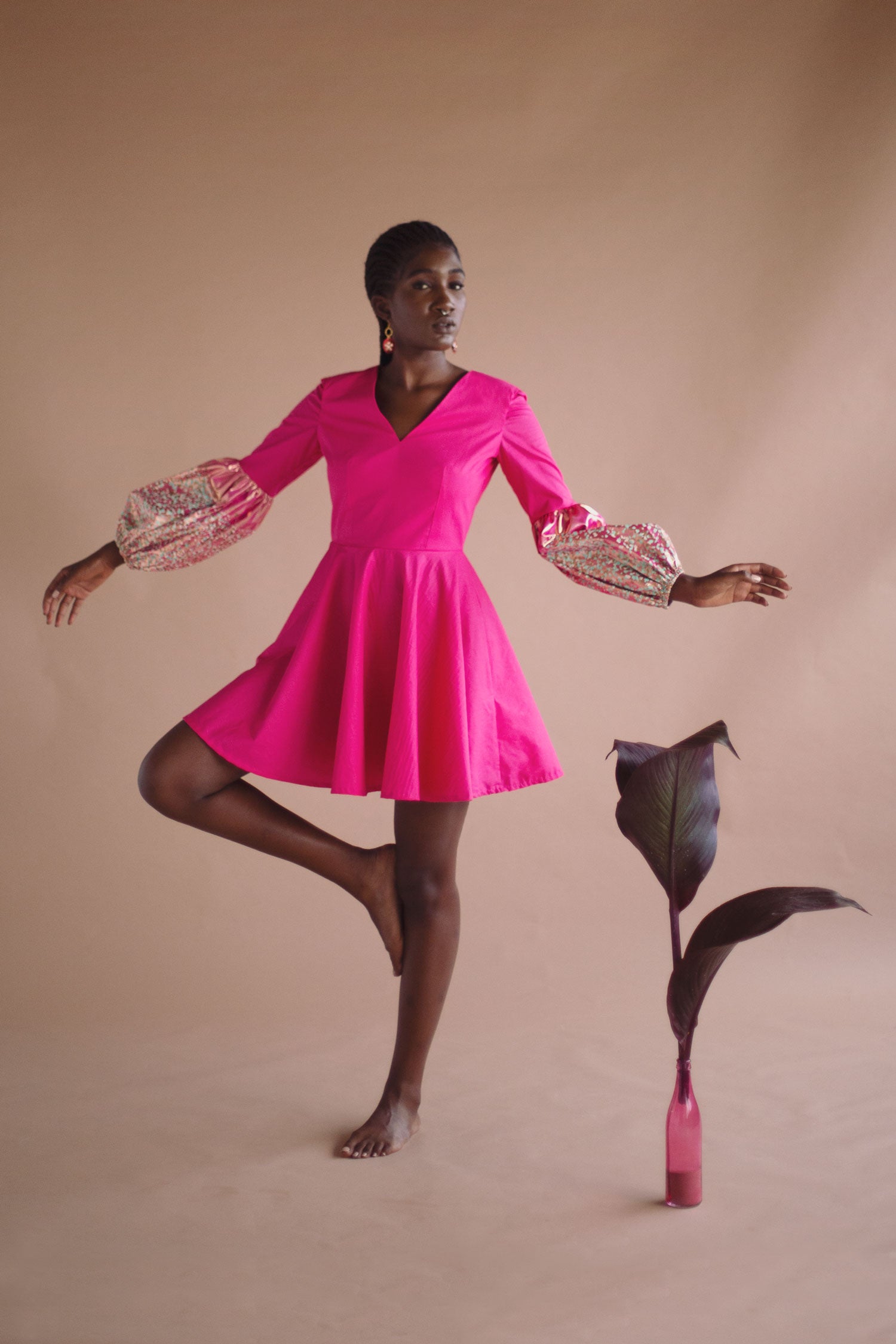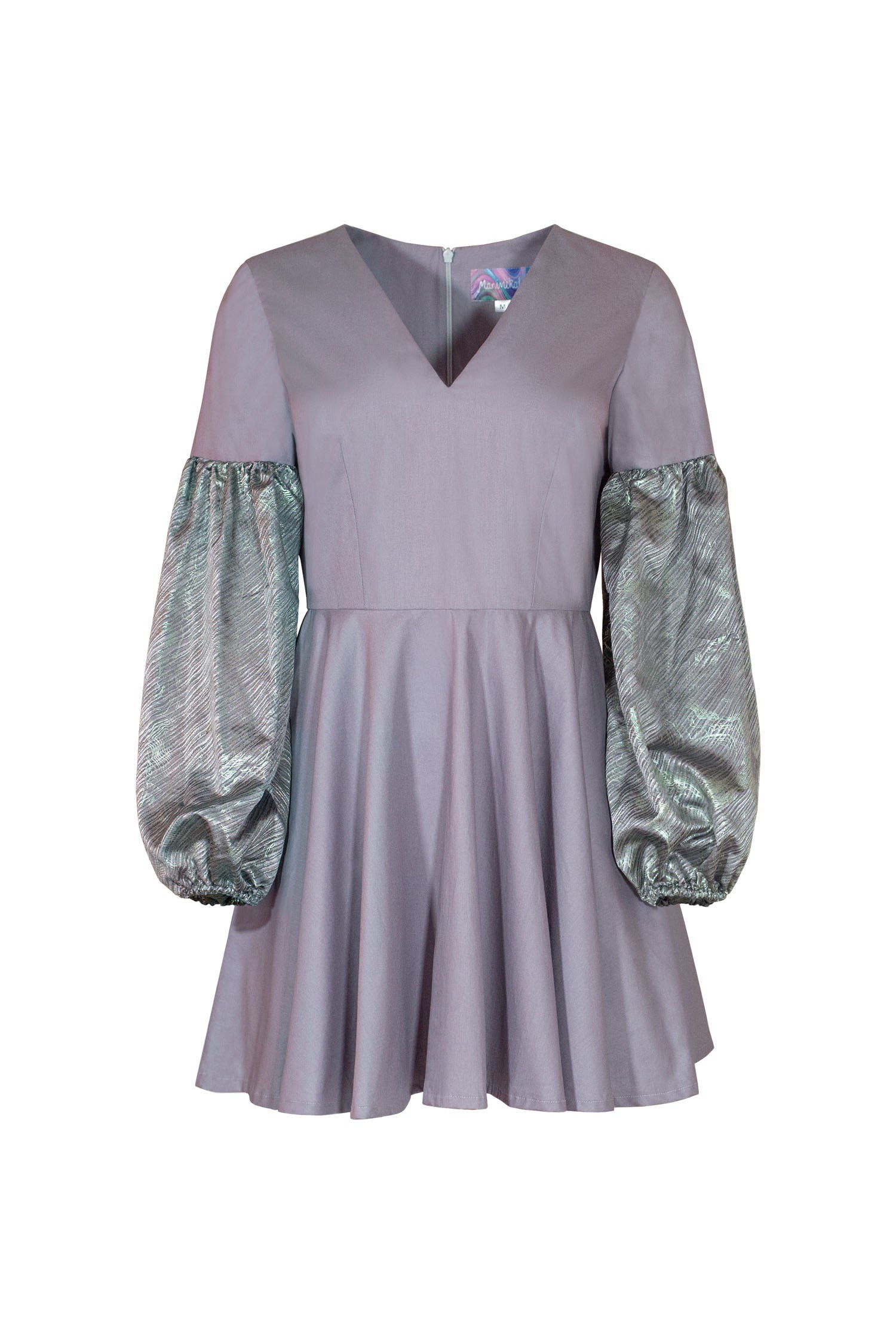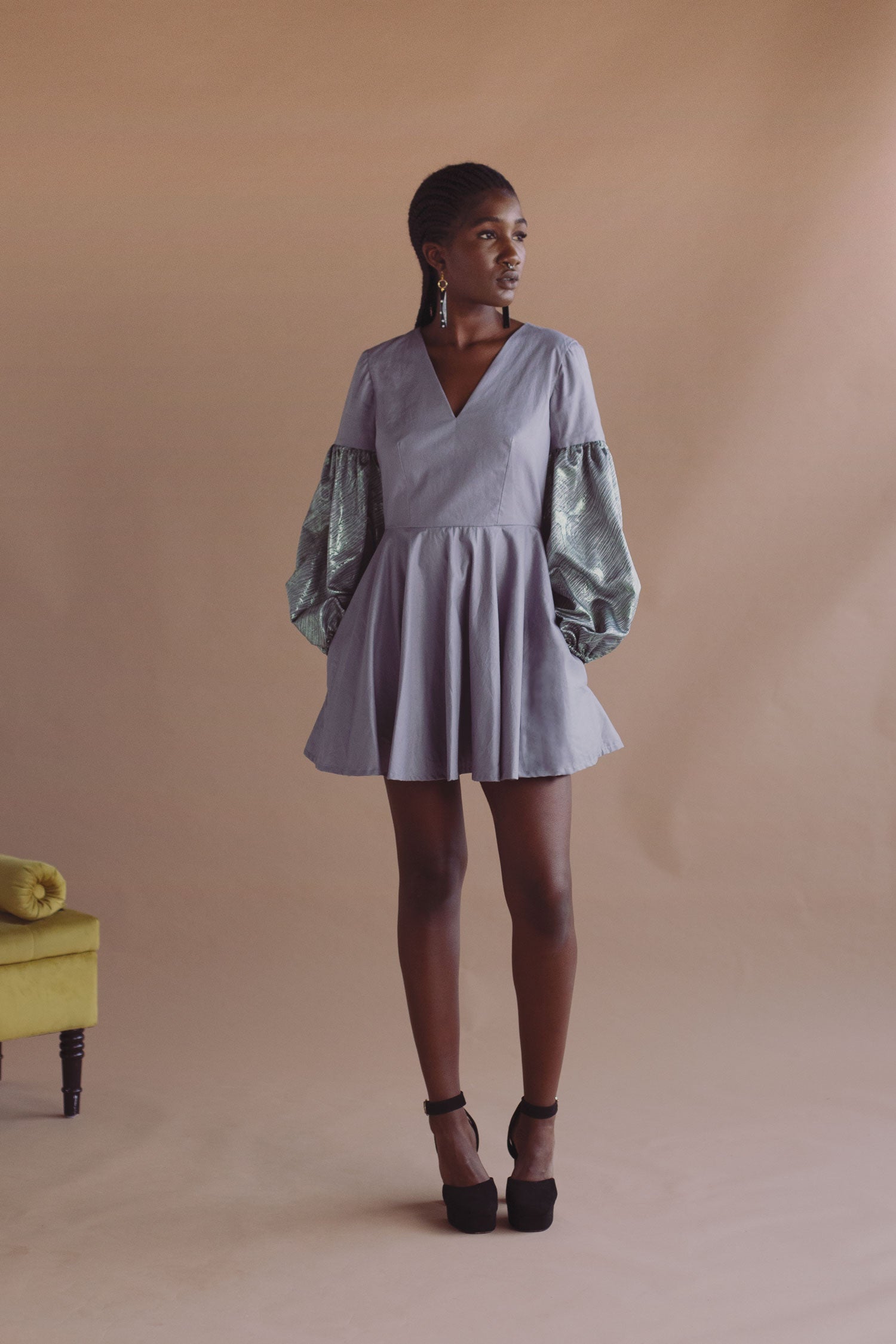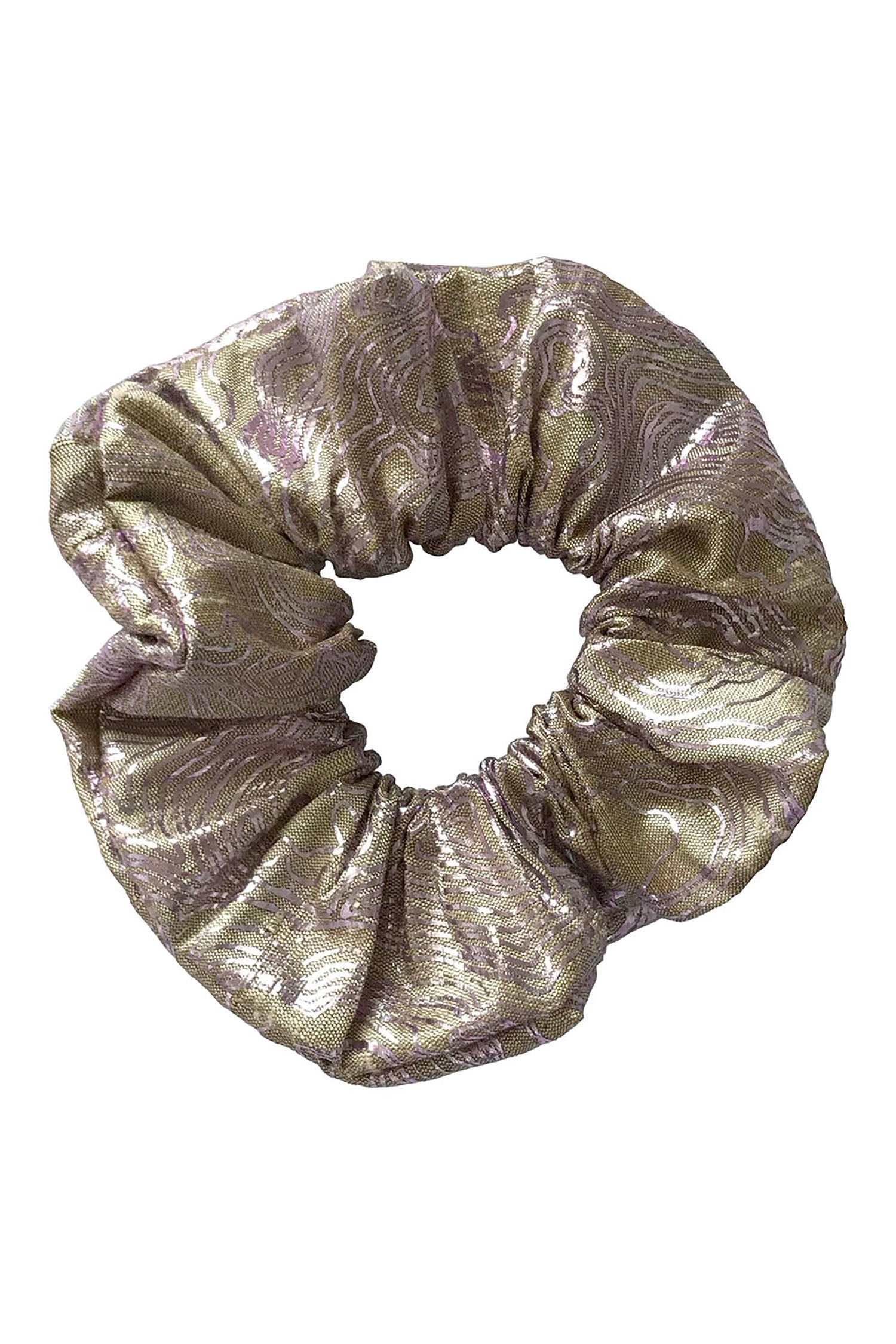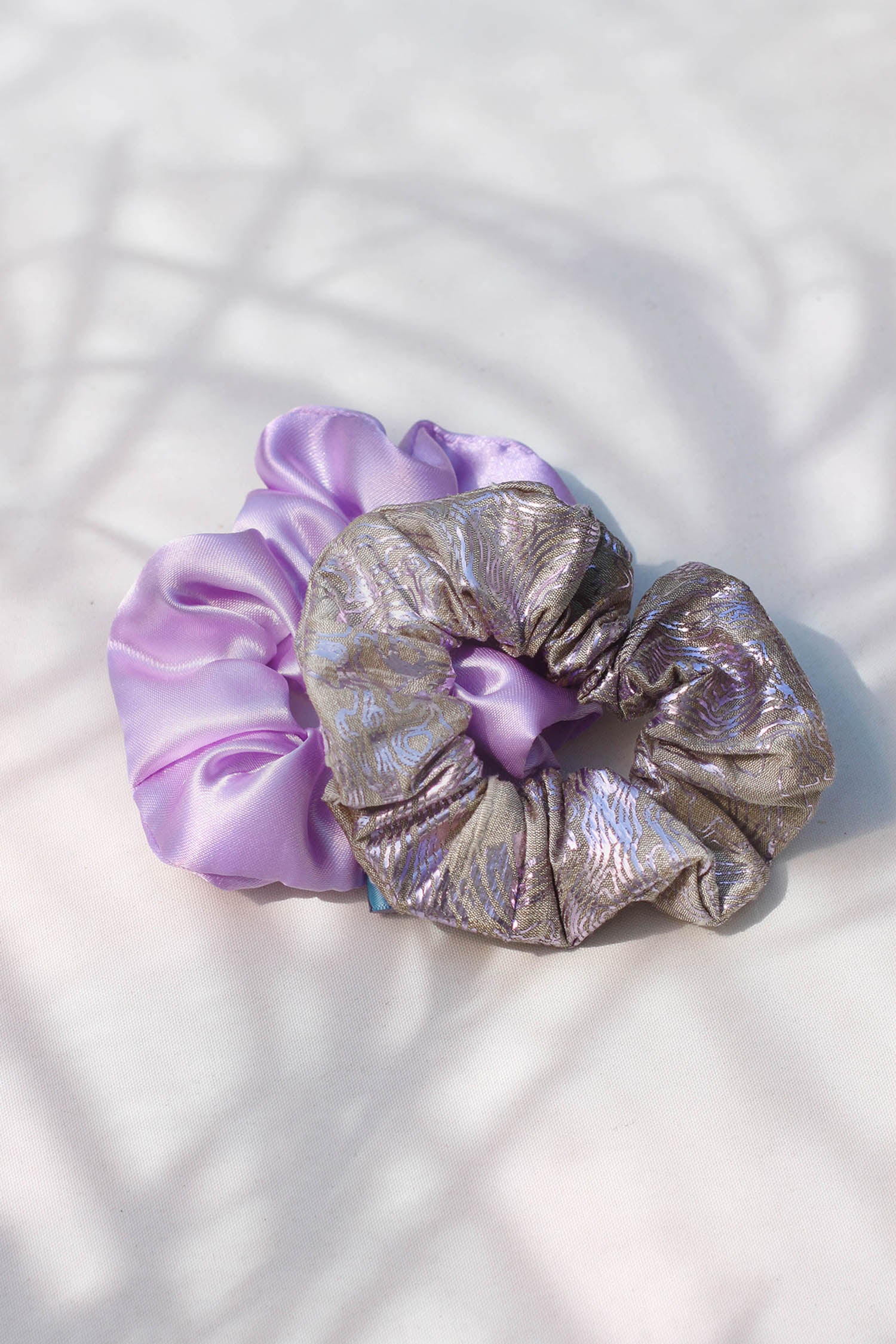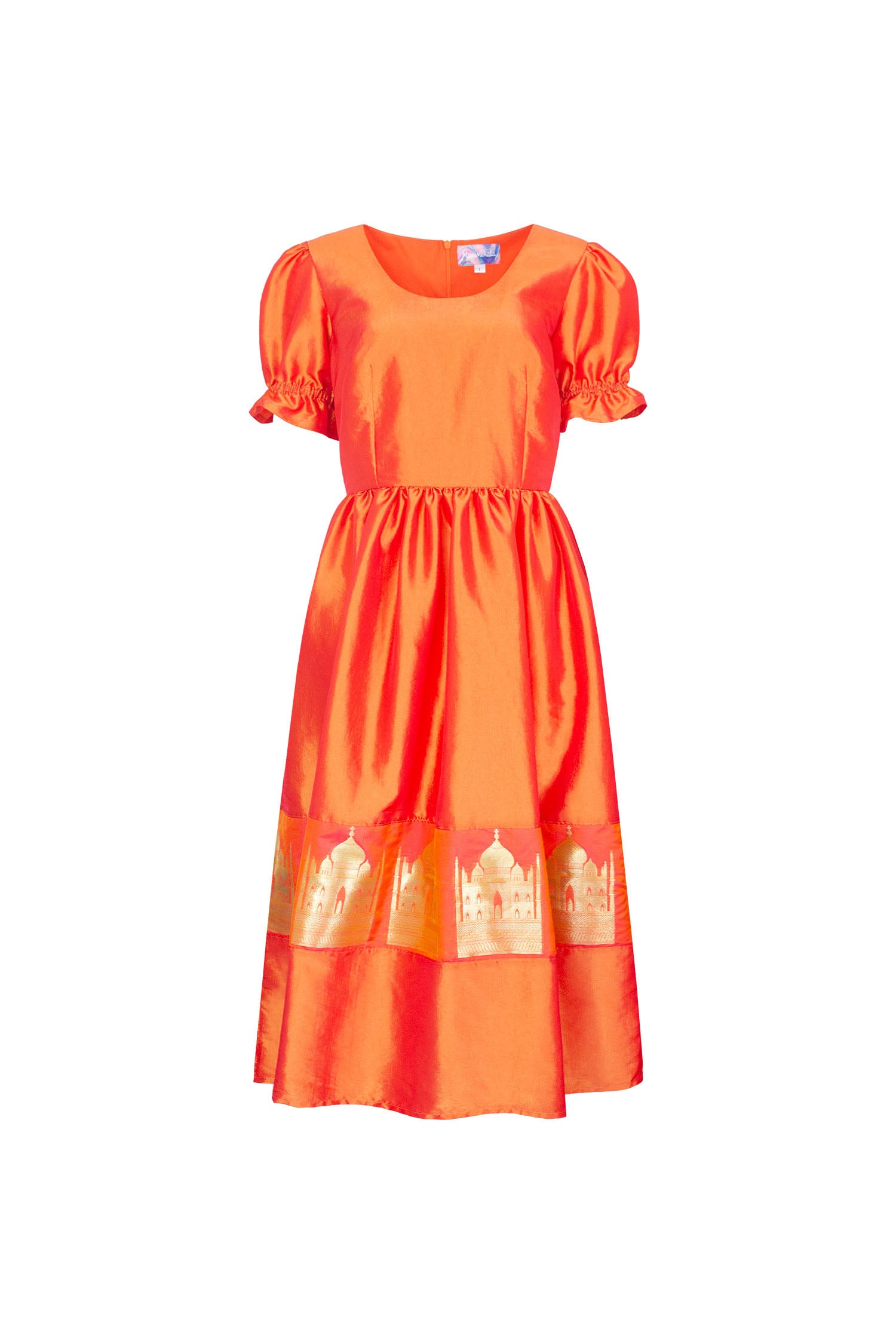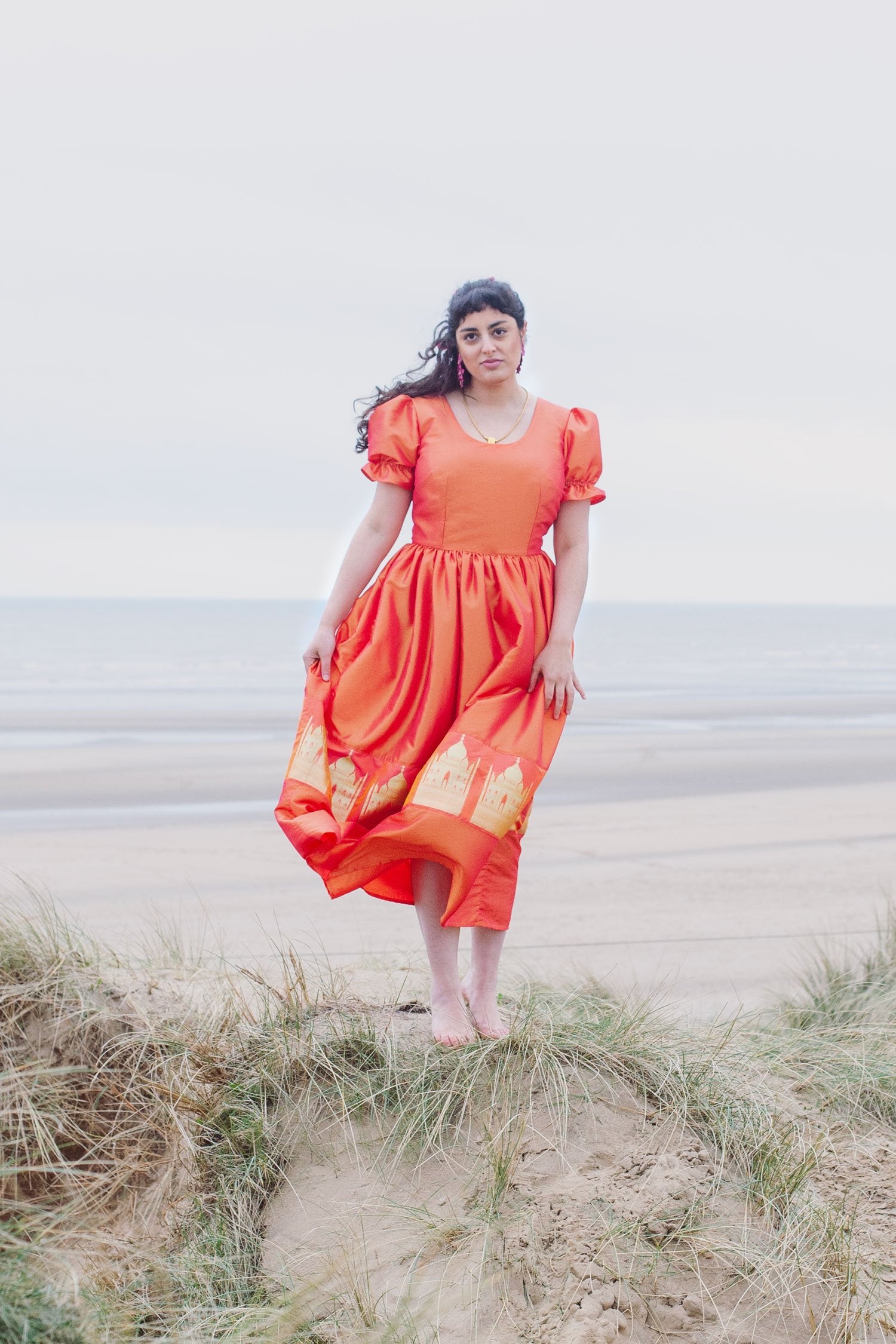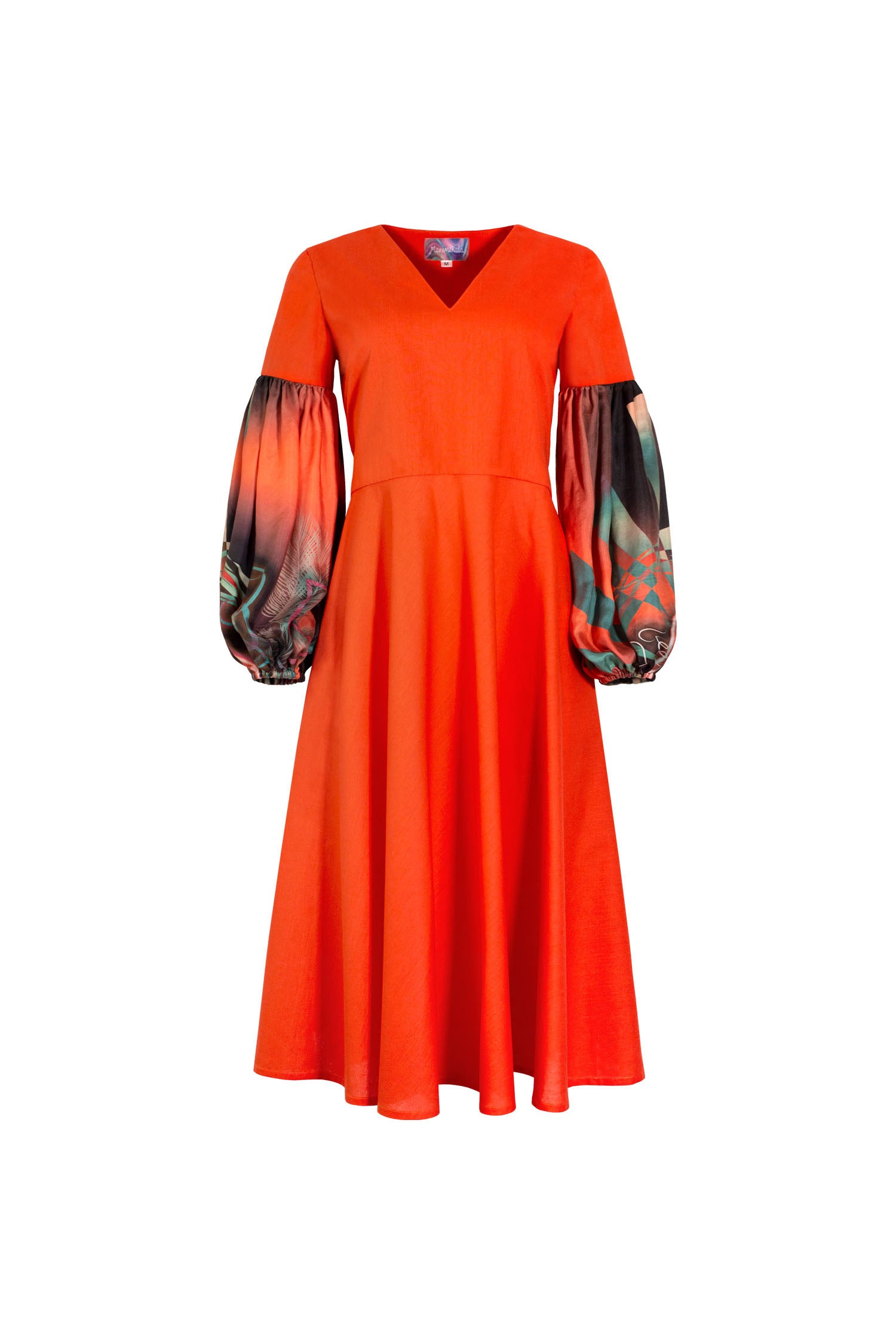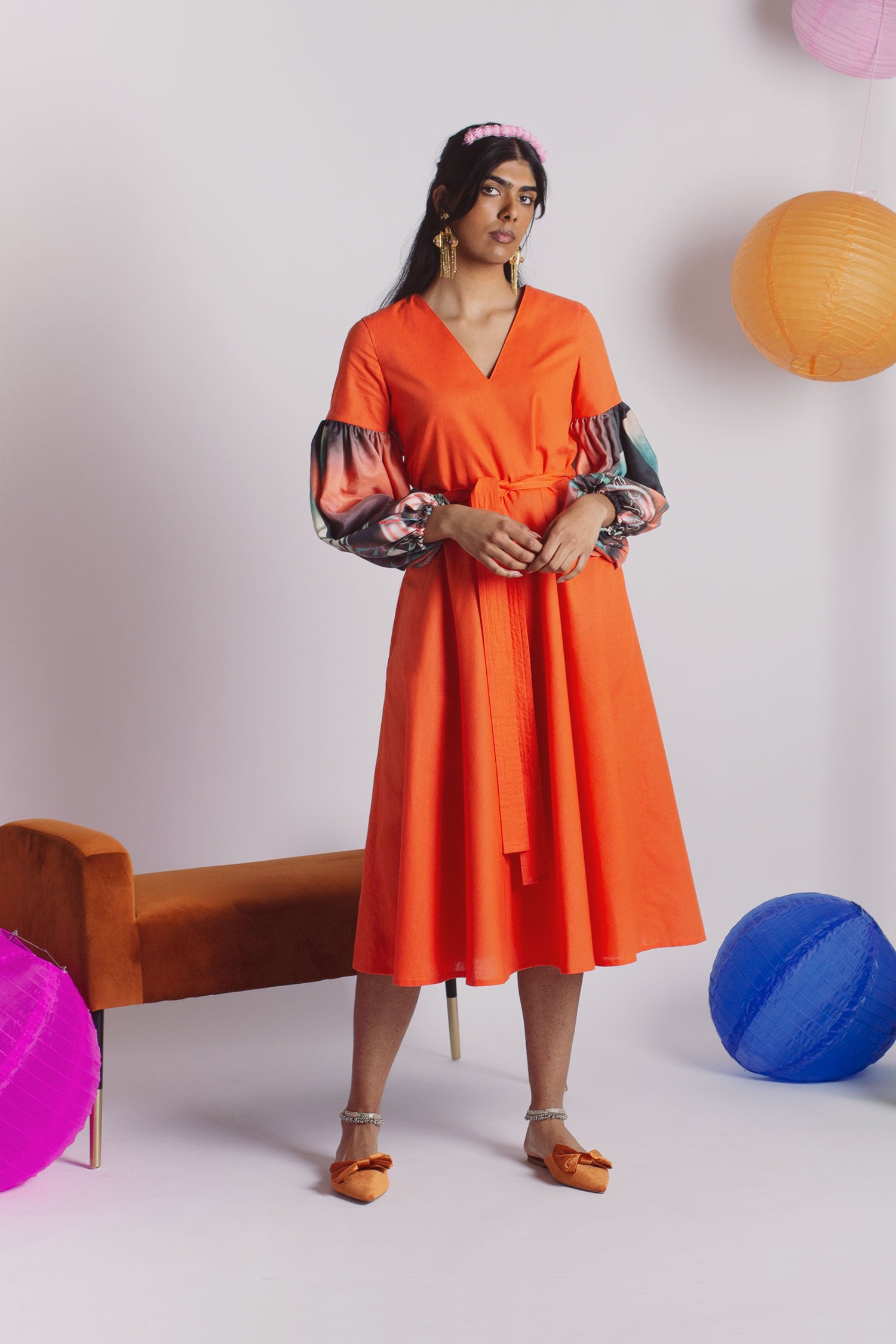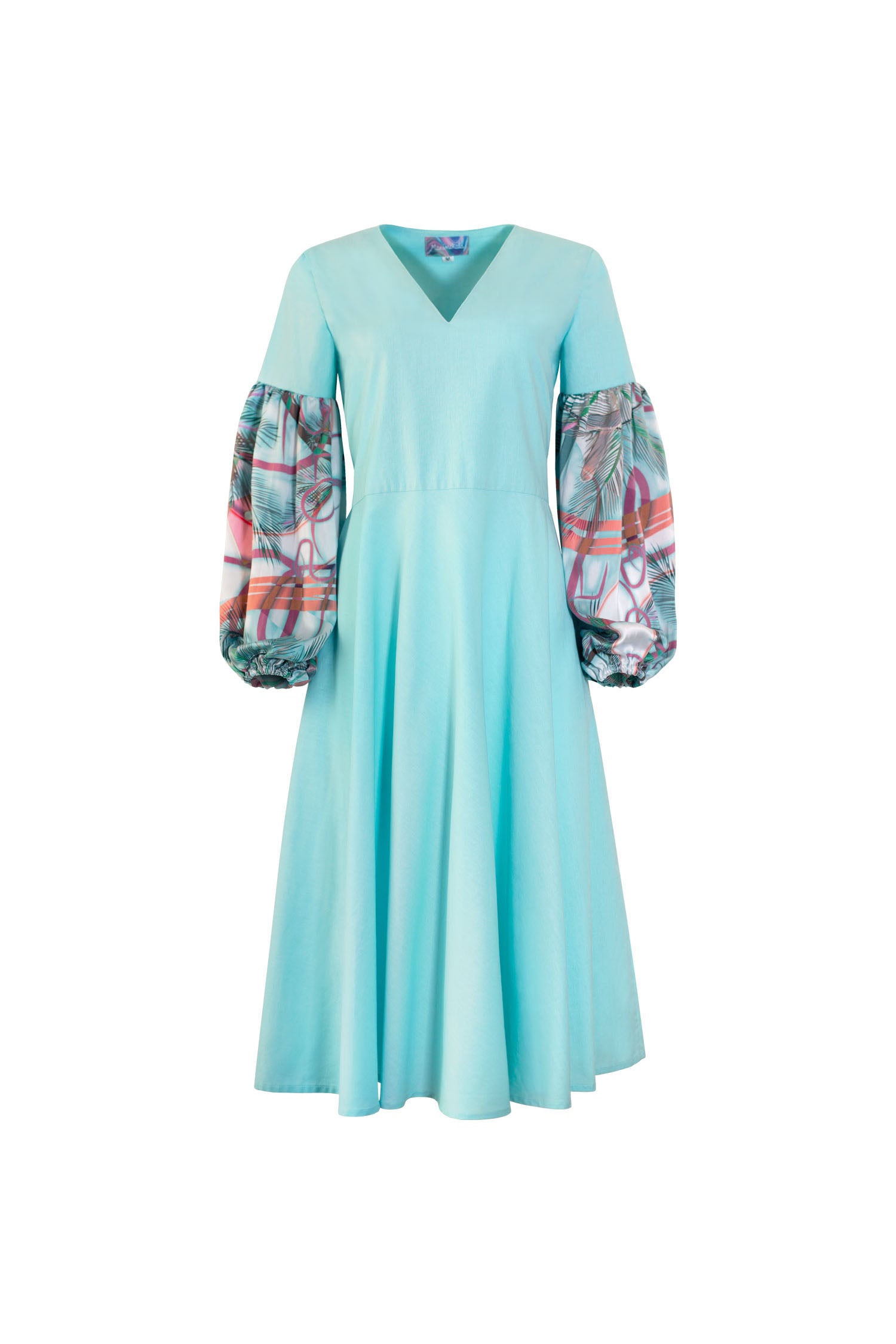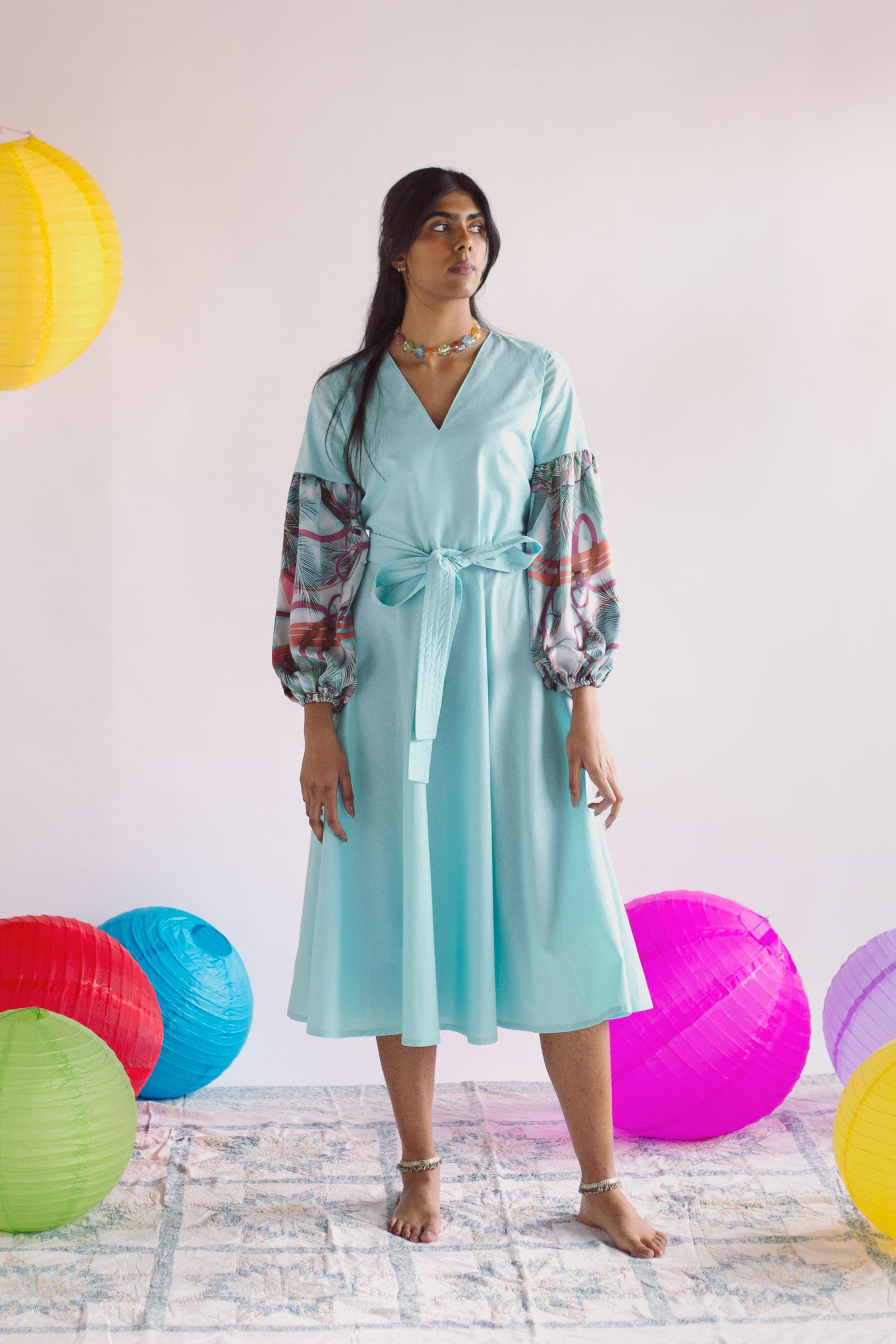Our Fabrics
Marbling
Marbling is a fascinating printing technique that dates back centuries, creating abstract swirling patterns by floating ink on water. Marbling gained popularity in Europe during the Renaissance and was used to embellish book covers, papers, and textiles. Prized for its intricate and delicate patterns, each hand-marbled print is totally unique and impossible to re-create. Because of this, marbling can be quite tempermental and it truly is an art!
Founder Mekala discovered marbling at while at university and loves experimenting with this ancient craft, leading to Manimekala's signature marble printed dresses.
SHOP THE COLLECTION
Marble
TIE-DYE
Tie-dye is a process of dyeing fabric unevenly, so that the dyed and undyed areas form a pattern. Fabrics can be re-tied and dyed multiple times to create intricate multicoloured designs, and there are many different techniques rooted in traditions across the world.
One north Indian technique of tie-dye is called bandhani and involves tying small sections of the cloth tightly with thread by hand before dyeing, creating a "resist" pattern where the tied thread prevents the dye from penetrating. Bandhani rose to prominence during the Mughal era, and today remains a vibrant part of Indian culture, with artisan families passing down the craft across generations.
Other tie-dye techniques include leheriya from Rajasthan, and shibori from Japan.
BROCADE
Brocade fabric is a luxurious textile characterized by intricate woven patterns often featuring metallic threads. In the middle ages, brocade became synonymous with opulence and royalty, and was used for ceremonial attire.
Varanasi brocade, renowned globally for its complexity, is a centuries-old textile tradition originating in the city of Varanasi, India. Meticulously crafted by skilled artisans, it involves weaving metallic threads called zari into silk threads to create a rich fabric with intricate shimmering motifs. Designs are often inspired by Mughal art and local nature, such as stylised florals, paisleys and peacocks. Varanasi brocade holds immense cultural significance, and is particularly sought after for bridal wear and high-end fashion.
PATCHWORK
Patchwork is a textile technique that involves sewing together small pieces of fabric to create a larger piece. Each fabric holds its own story, contributing to the rich tapestry of the final composition. Traditionally, patchworking was a way to re-use valuable and scarce fabrics, which were time-consuming and expensive to make. For example, when a child's dress became too small, it may be cut up and patchworked with other scrap of fabric into a quilt to keep them warm at night.
Patchwork quilting became widespread during the colonial era in America, influenced by the British
settlers who brought Indian rajais with them to the United States. These intricately stitched quilts, traditionally made from recycled textiles, inspired American settlers to create their own quilts using scraps of fabric, evolving into a cherished folk art tradition
SHOP THE COLLECTION
Patchwork
SCREEN-PRINT
Screen-printing is a method that involves pushing ink through a fine mesh screen, creating a pattern on the fabric below. Originating in ancient China, it later spread across the world and gained significant popularity in the West during the 20th century with the rise of the Pop Art movement, as this technique is particularly useful for translating hand-drawn illustrations into vivid and durable prints. Artists like Andy Warhol popularized screen-printing for its ability to produce bold and graphic designs that could be easily reproduced on fabric or paper.
Founder Mekala enjoyed screen-printing by hand during university and continues to use this versatile technique in Manimekala designs today.
SHOP THE COLLECTION
Screen-Print
DEADSTOCK
Deadstock is surplus or excess fabric that was produced but never used for its intended purpose. This could be because a brand ordered fabric from a manufacturer but then changed the design, cancelled the order, or didn't end up using the full amount, so it ends up in a warehouse unused. By repurposing deadstock, we can reduce waste in the fashion industry and lessen the environmental impact associated with textile production.
Sourcing deadstock fabrics can uncover some absolute gems, but often only in small quantities. This is useful for small brands like Manimekala but sometimes we are only able to get a few metres of a particular fabric - meaning that design will be extremely limited edition!
Deadstock fabric is also known as overstock or end-of-roll/end-of-line fabric.
SHOP THE COLLECTION
Deadstock
HAND-EMBROIDERY
Hand embroidery is a centuries-old craft that involves decorating fabric with intricate stitches using a needle and thread, sometimes with added beads or sequins, to create three-dimensional tactile embellishments. Artisans meticulously hand-stitch each pattern, creating unique and timeless pieces.
Beyond its visual appeal, embroidery serves as a medium for storytelling, cultural expression and personalization, often holding symbolic meanings reflecting religious beliefs, folklore, and personal stories. Hand embroidery holds deep cultural significance in India, where it's been practiced for centuries and passed down through generations. Each region has its own distinct style, from the colorful phulkari embroidery of Punjab to the elaborate chikankari of Lucknow.

